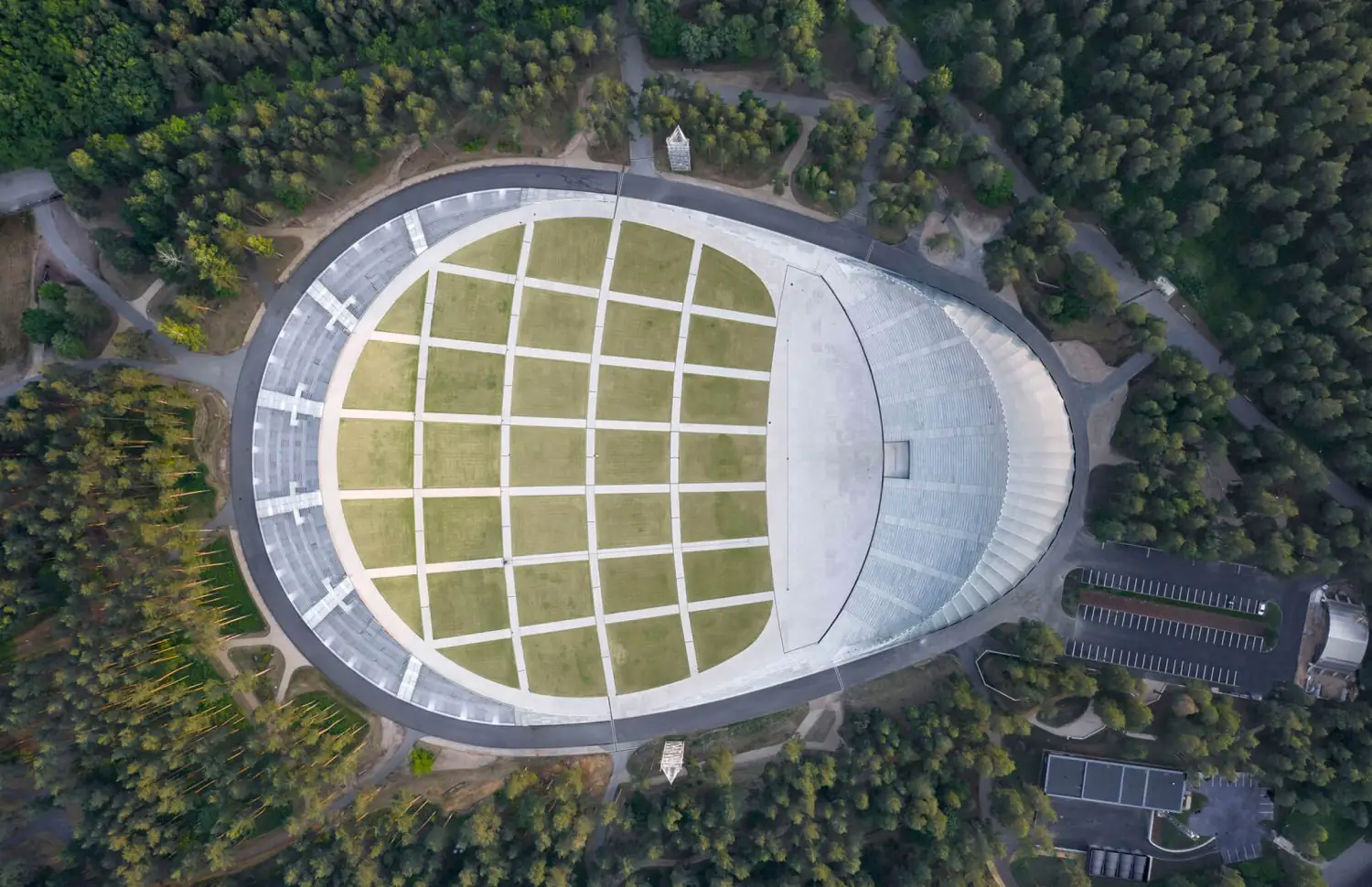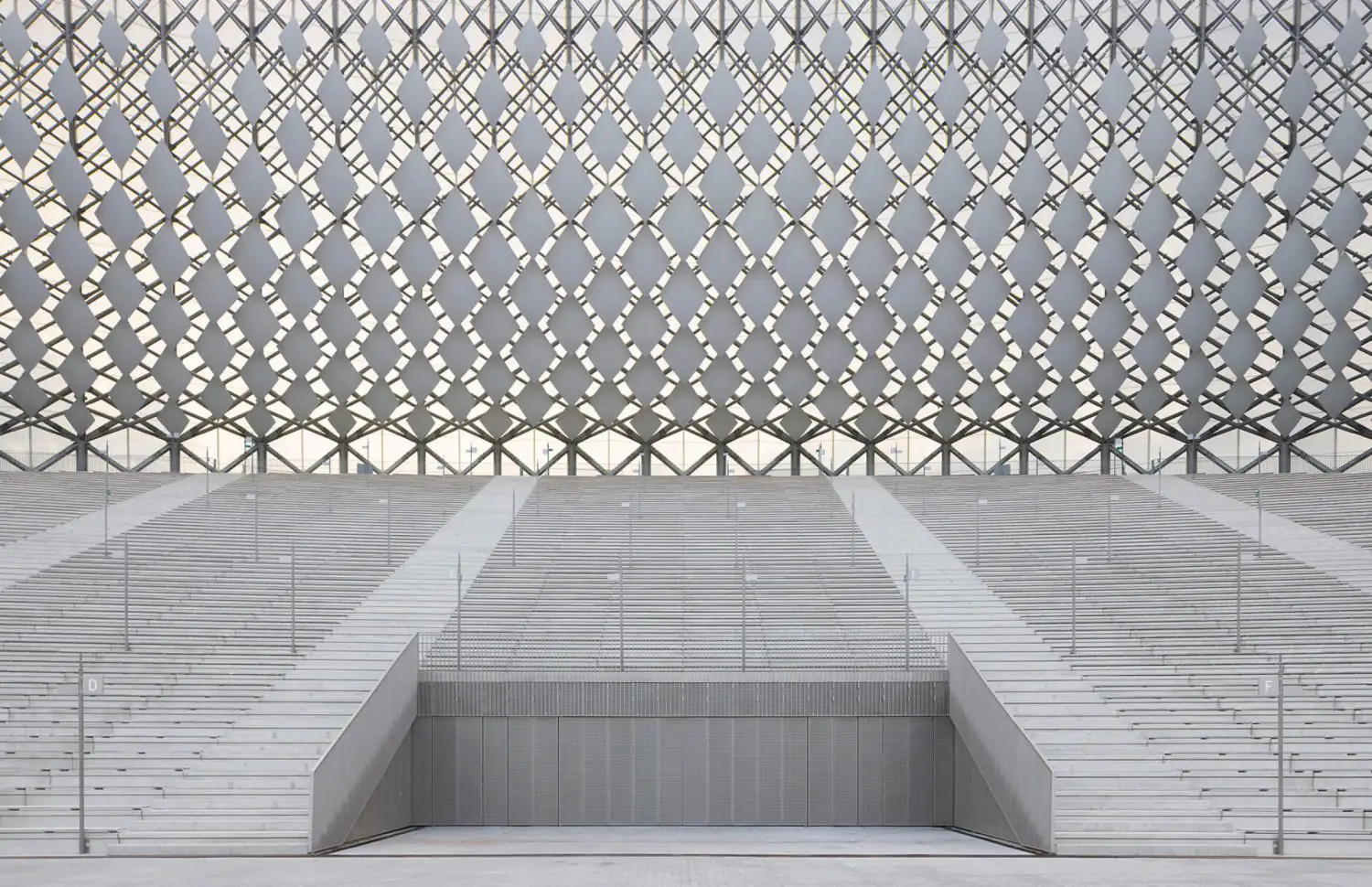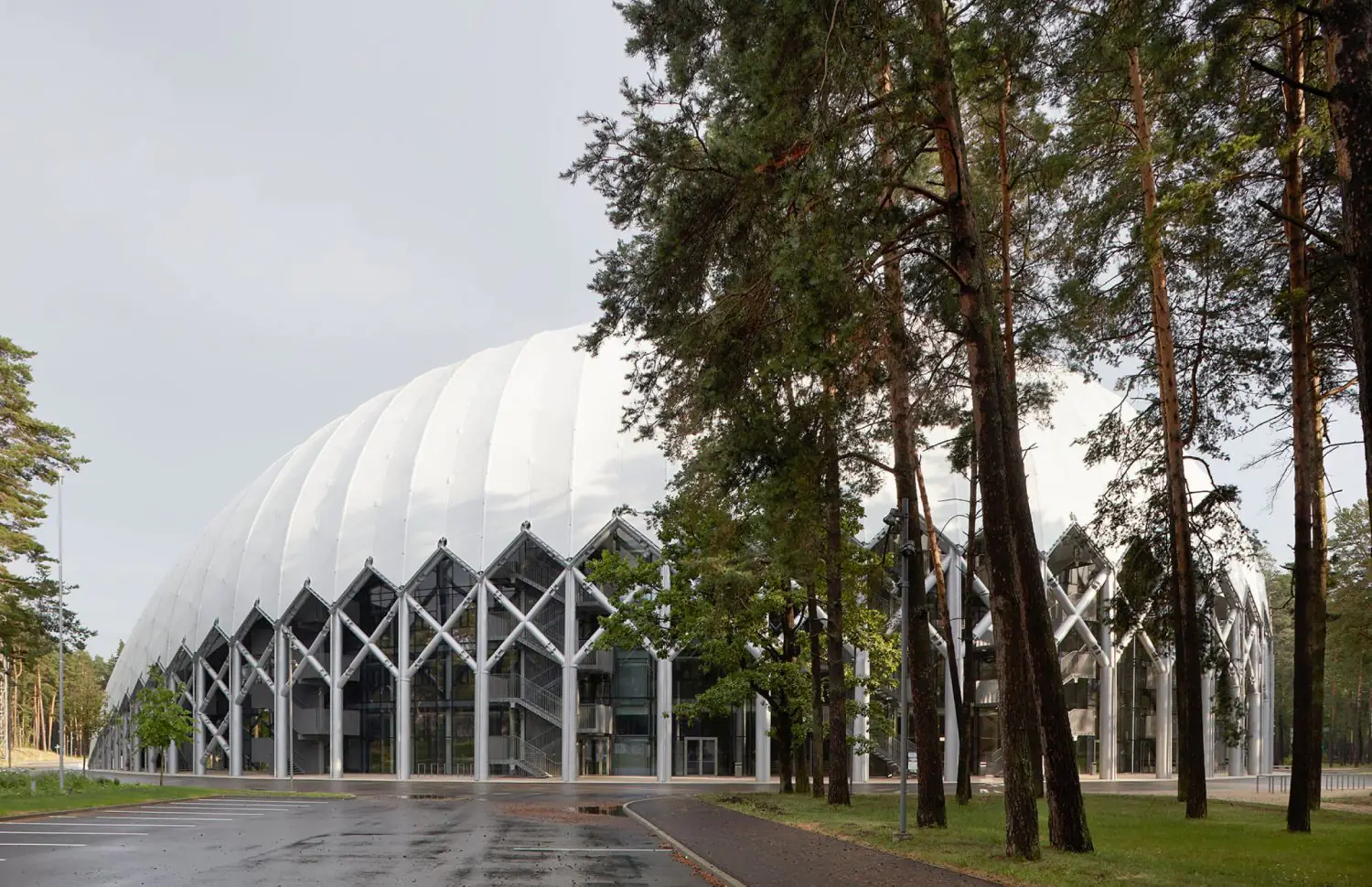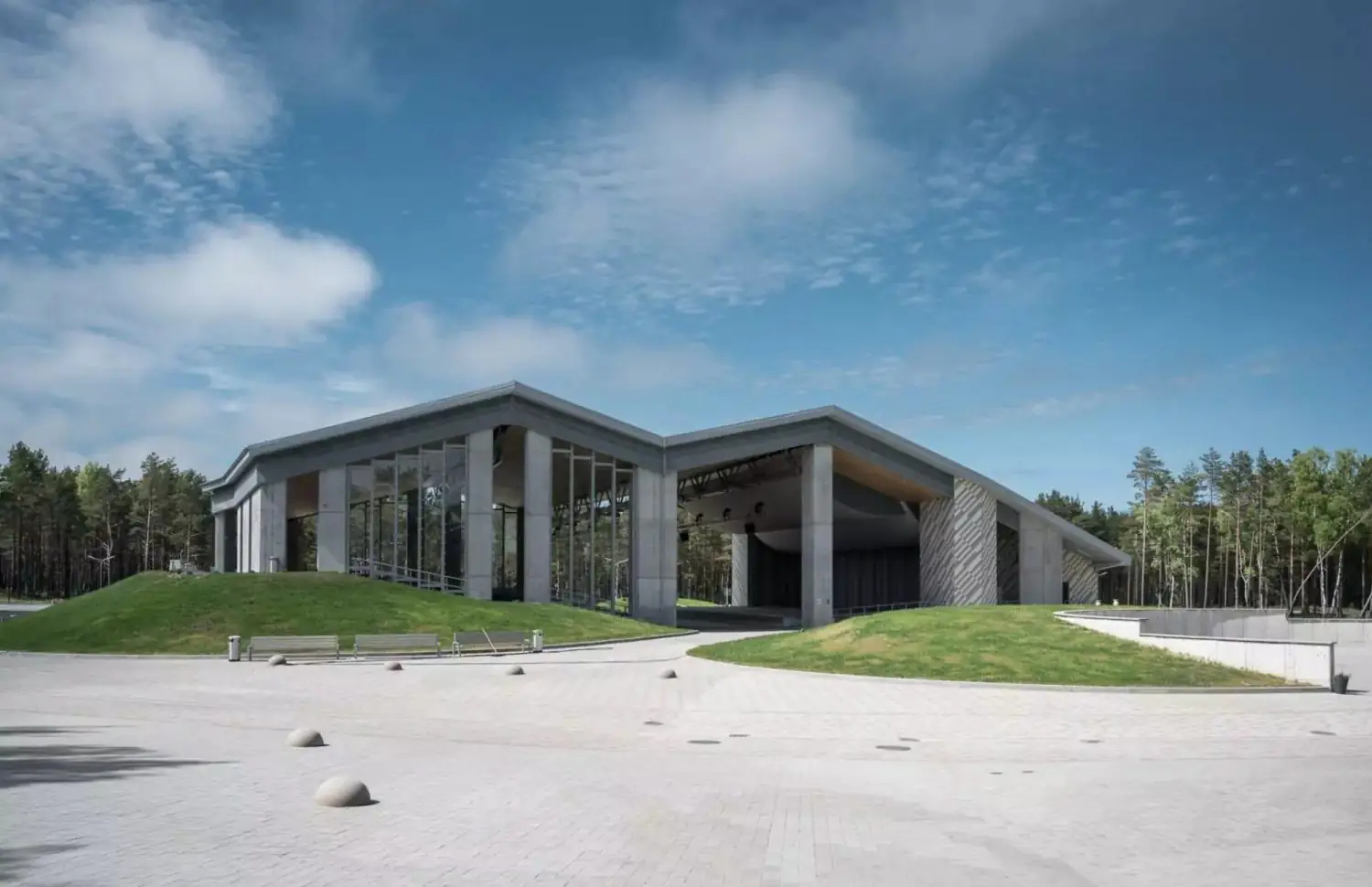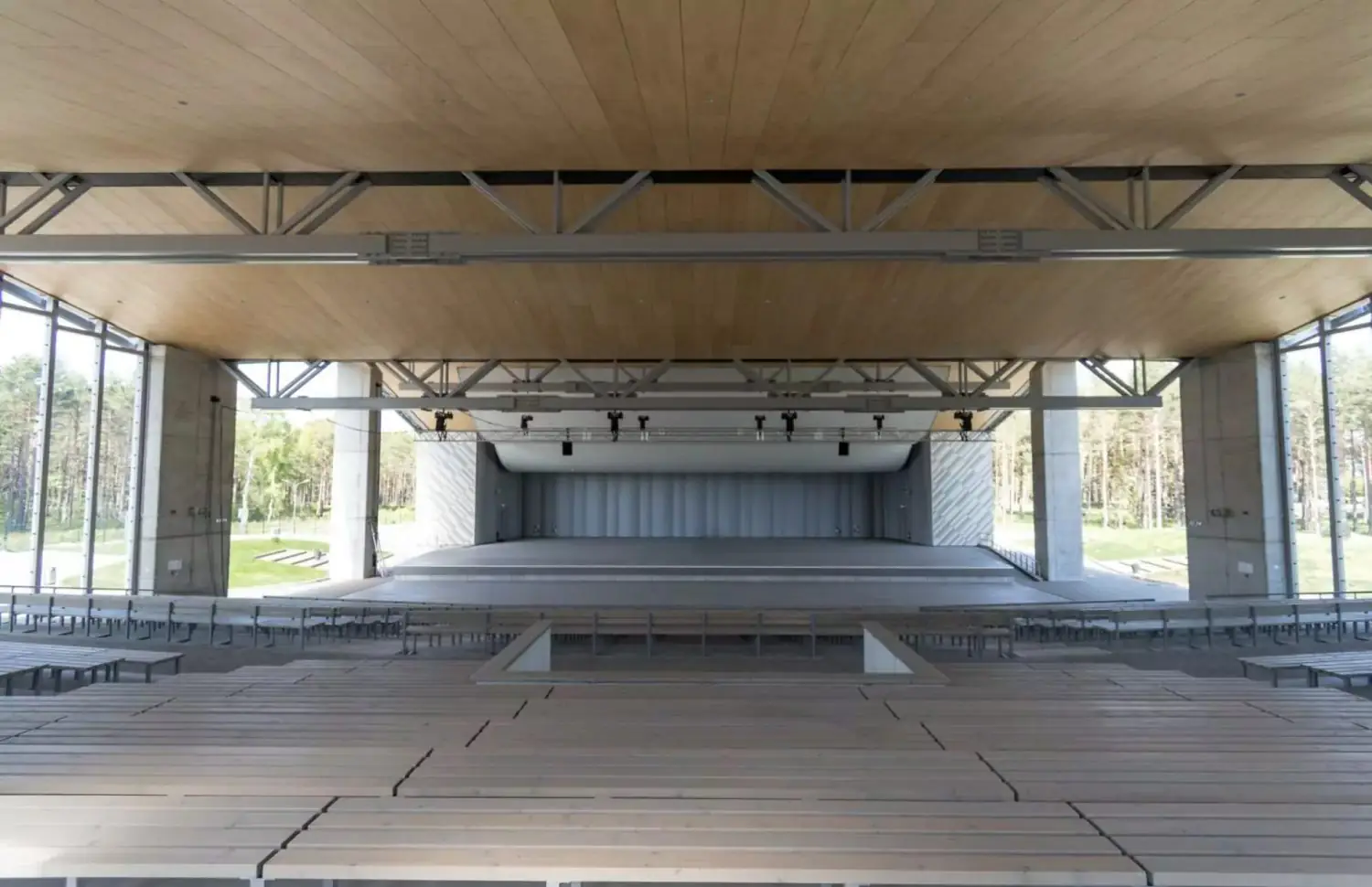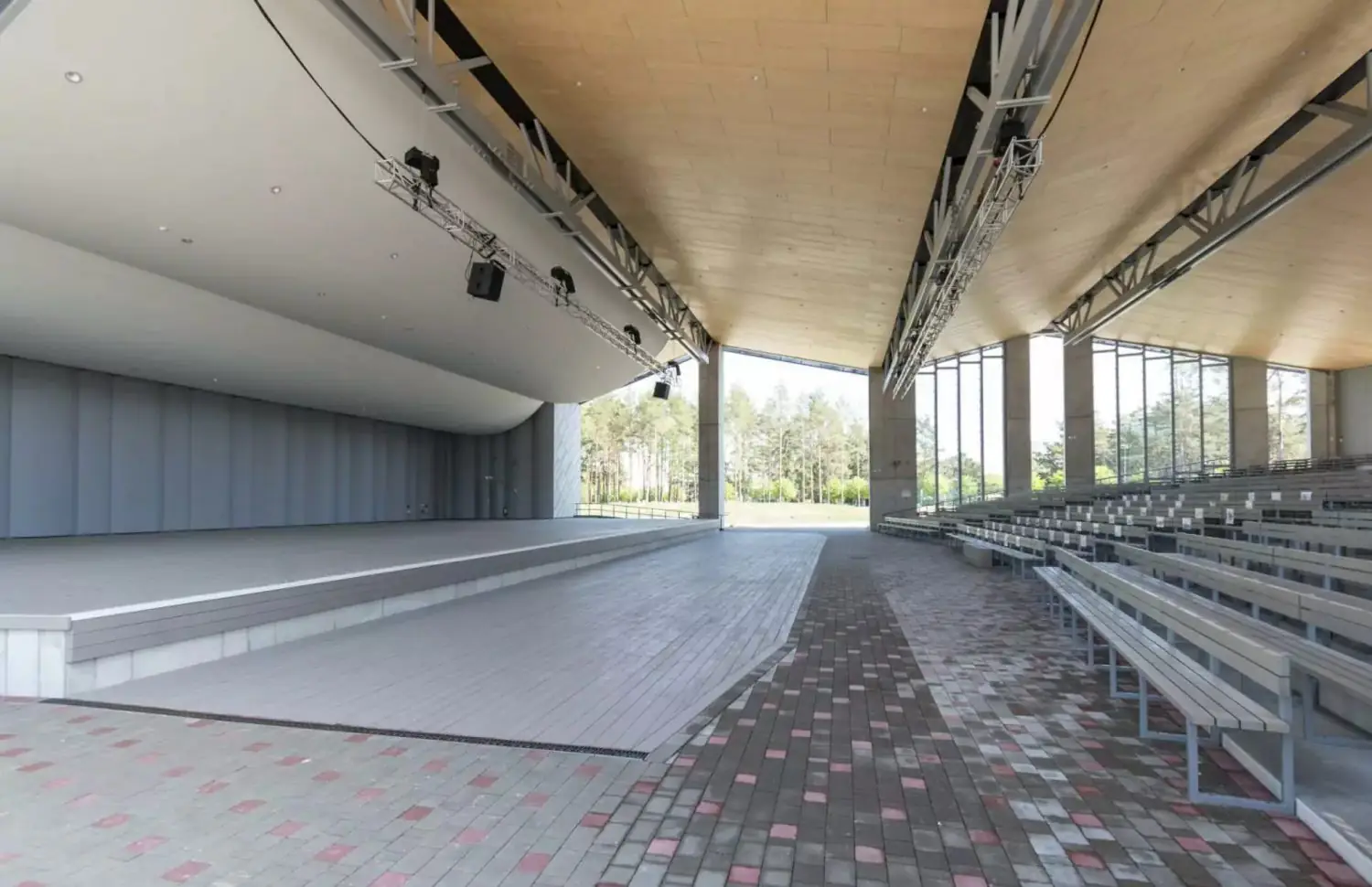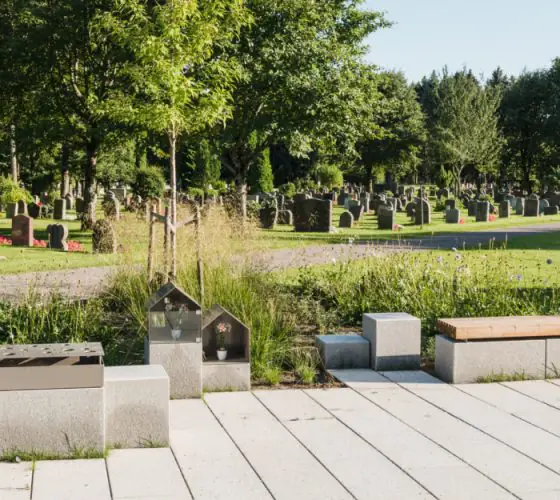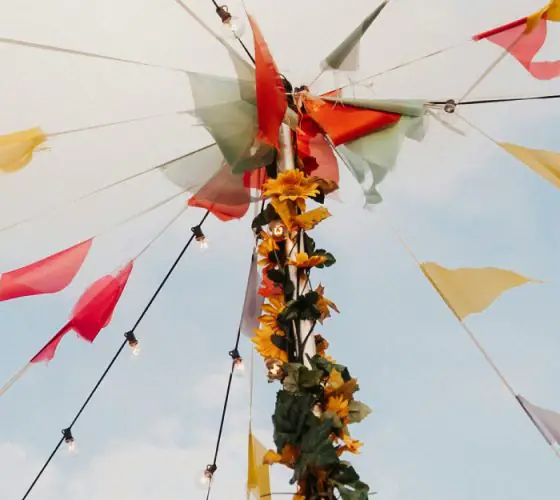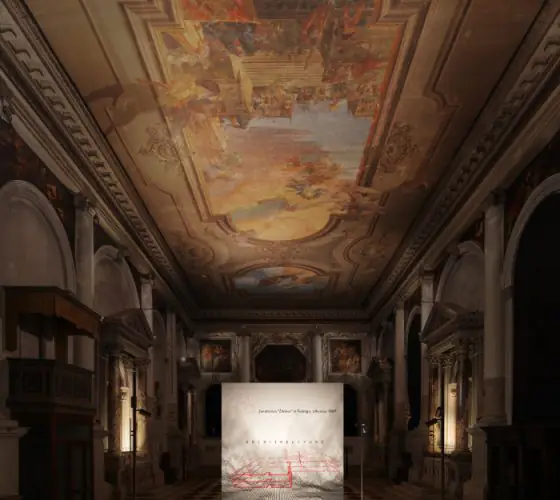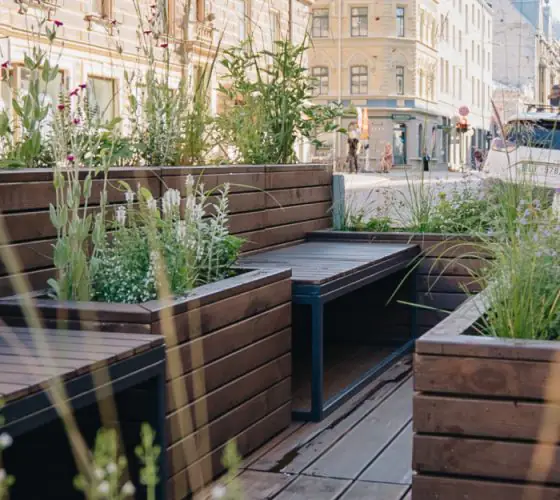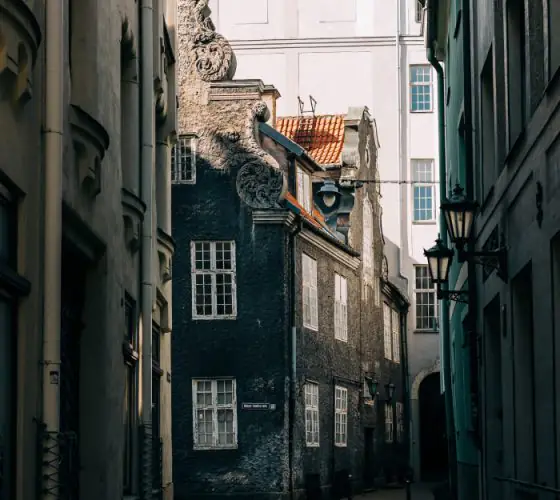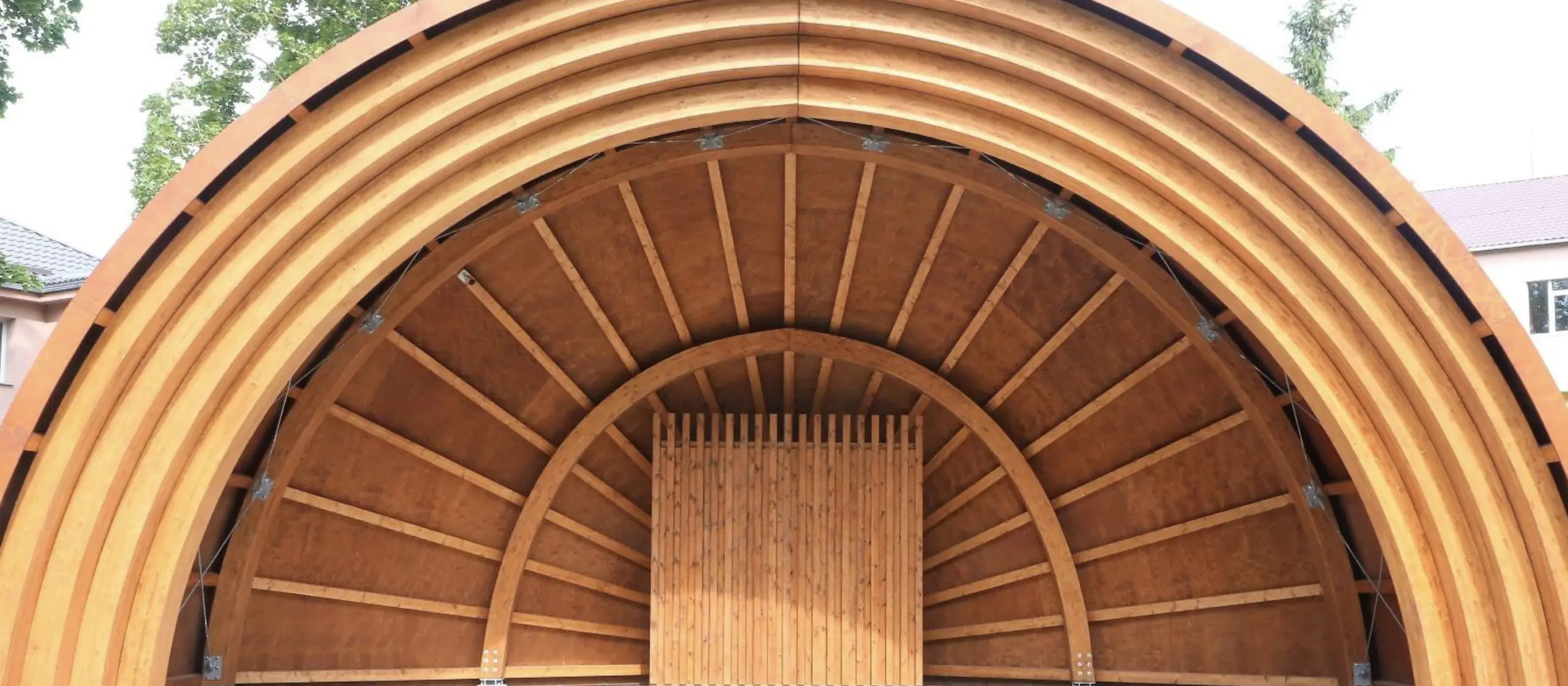
gadabuve.lv
Researchers Aleksandr Semenov and Gleb Derevyanko have made a map of Latvian open-air stages, which contains about 130 objects. The yellow color marks the buildings that seem to the authors to be the most interesting from the architectural point of view. All the markings are accompanied by photos, and some of them also with brief descriptions.
Why are Open-Air Stages so Important for Latvia?
The tradition of group chanting in the Baltics has a long history. And although most cultures around the world have mass folk choirs, it is in Latvia that choral singing has become one of the symbols of freedom for Latvians.
It is believed that the first celebration of national music, song and dance was held in the ruins of Dobele Castle in 1870. At that time Latvian society was experiencing a new cultural upsurge: the New Latvians movement was developing, whose participants opposed attempts to assimilate the Latvian population with the German and demanded equal rights for Latvians with other peoples within the Russian Empire.
In 1873, the Riga Latvian Society organized the First All-Latvian Song Festivall (I Vispārīrīgie latviešu dziedāšanas svētki). It still exists today and takes place every five years: the festival has been held 27 times since the 19th century and now also includes folk dances. Special open-air stages were built for this big event — this is how the tradition of building open-air stages all over Latvia developed.
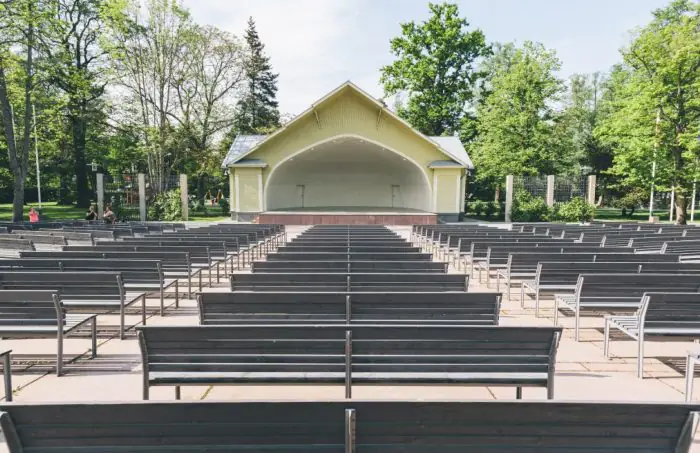
atrastalatvija.lv
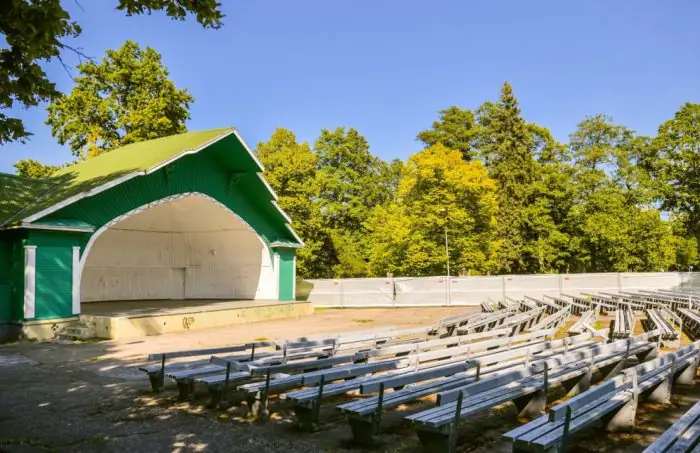
atrastalatvija.lv
The wooden open-air stages in Melluži, one of the districts of Jūrmala, is considered to be one of the oldest in the Baltic states—another one of its age is preserved in the Estonian town of Kuressaare. The bandstand in Melluži was built in 1938, but it was reconstructed in the 1960s.
All Latvian open-air stages can be divided into two large groups: with open or covered seats. Stages are also divided into landscape and grandstand stages. In the former, the seats for spectators stand on a natural elevation, which provides a good view for different rows. But a suitable relief does not exist everywhere, so for many stages have to make special stepped stands (amphitheater). Sometimes next to one stage may exist both specially erected bleachers and bleachers on natural terrain.

atrastalatvija.lv
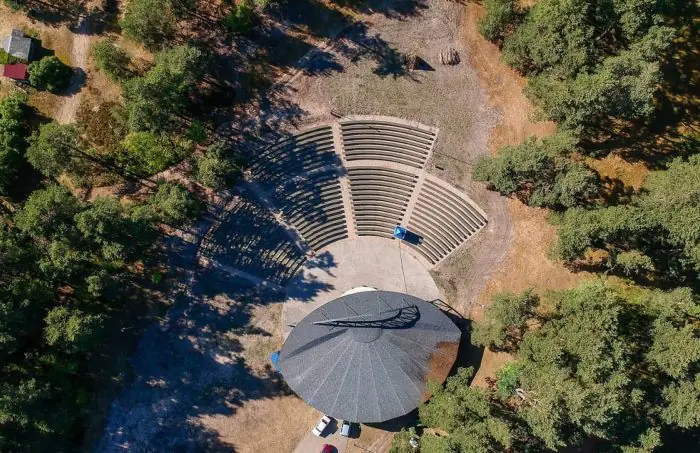
atrastalatvija.lv
Any of these types of open-air stages contains other distinctive features. For example, some grandstands are designed in local style with references to traditional Latvian architecture. Others, on the contrary, tend towards modernism and internationalism. Some of the stages are made of wood, some are mostly made of metal. There are also closed stages, which protect the performers from the sun or rain, and open stages, which are more budget-friendly constructions.
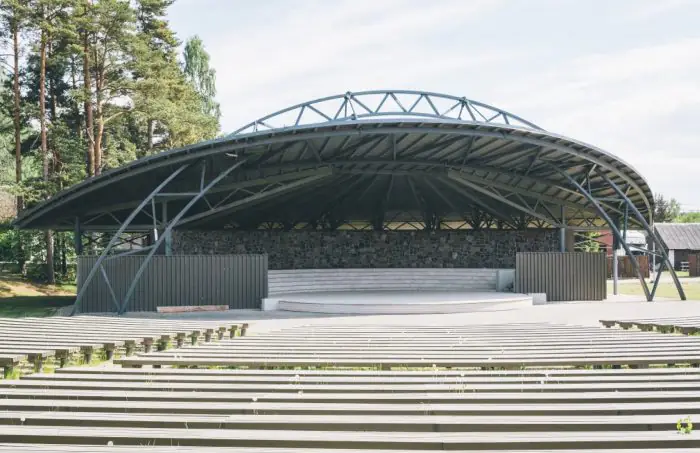
atrastalatvija.lv
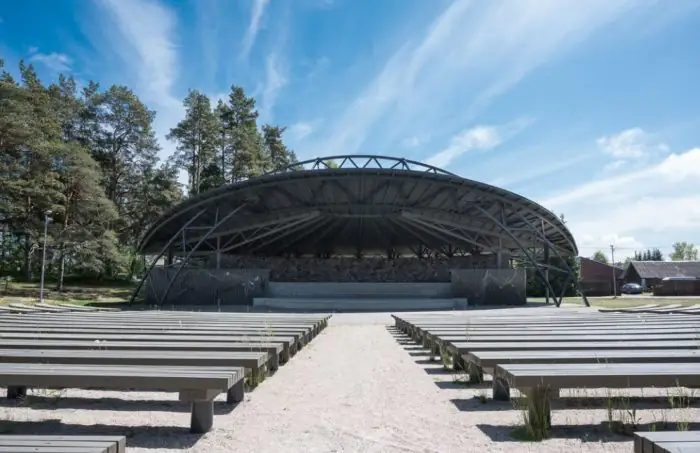
atrastalatvija.lv
Open-Air Stages without a Canopy for Spectators
The majority of Latvian bandstands have open-air seats: as a rule, the audience is not protected from precipitation and the sun in any way, and there is a small canopy over the stage. The most famous of these is the Mežaparks Great Bandstand (Mežaparka Lielā estrāde in Riga), which we have described in detail. It got its modern look in 2022: the stage was built according to the project of 2007 by the architectural bureau of Juris Poga and Austris Mailītis. Previously there was a stage built between 1954 and 1955.
Two stylistics are clearly manifested in this type of estradas: regional and modernist. In the regional, or authentic, aesthetics, local traditions characteristic of Latvian peasant and urban architecture—national motives—are vividly manifested. You can read about them, for example, in our article about wood in the Latvian cultural canon.
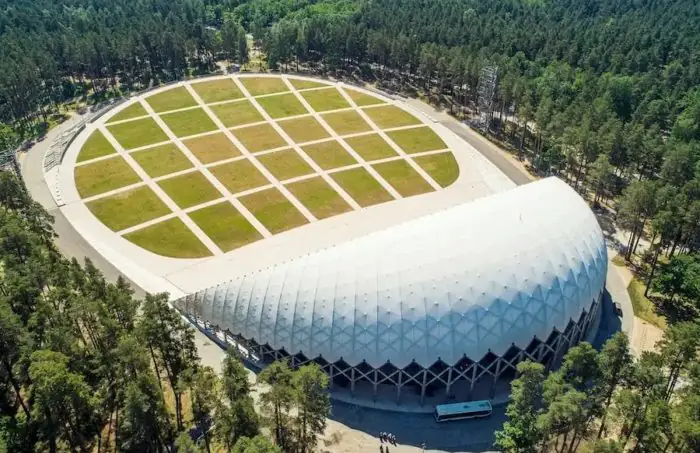
liveriga.com
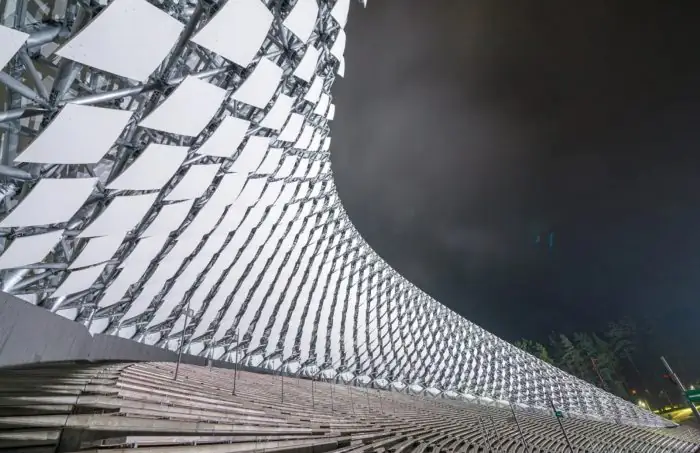
liveriga.com
In modernist aesthetics, on the contrary, international motifs, popular in many countries, are more evident, because modernism is often called International Style. Both regional and international features can be equally strong in a single building.
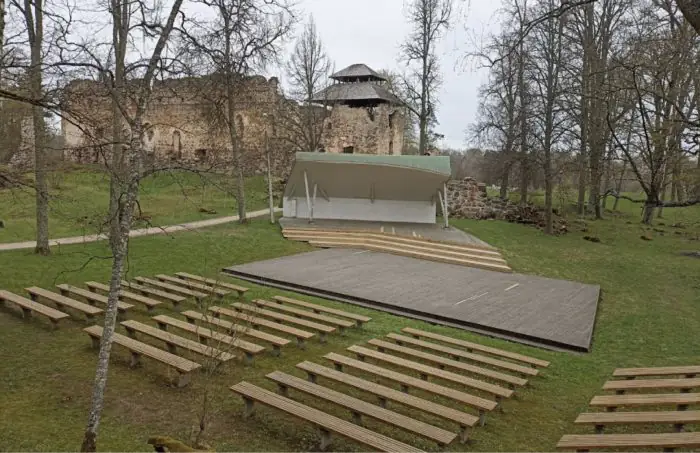
Photo: Aleksandr Semenov
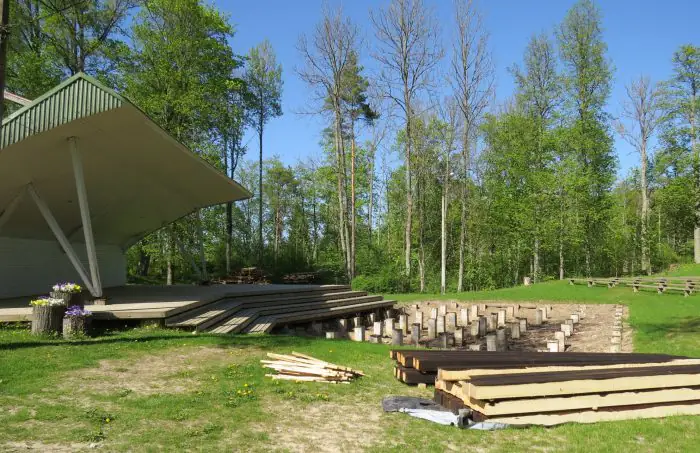
Photo: Aleksandr Semenov
Regionalism
Perhaps the most distinctly regional motifs are expressed in the architecture of the Jeberleja wooden open-air stage in the village of Jeberi. Its walls are made of logs and the roof is covered with wooden shingles. The roof takes up about ⅔ of the total height of the building: this is characteristic of traditional architecture in the Vidzeme. Even the brick chimney is in its place!
The stage in the village of Jeberi was built during the Soviet era, it is already several decades old. Unfortunately, it is now in a state of disrepair and is not used for its intended purpose.
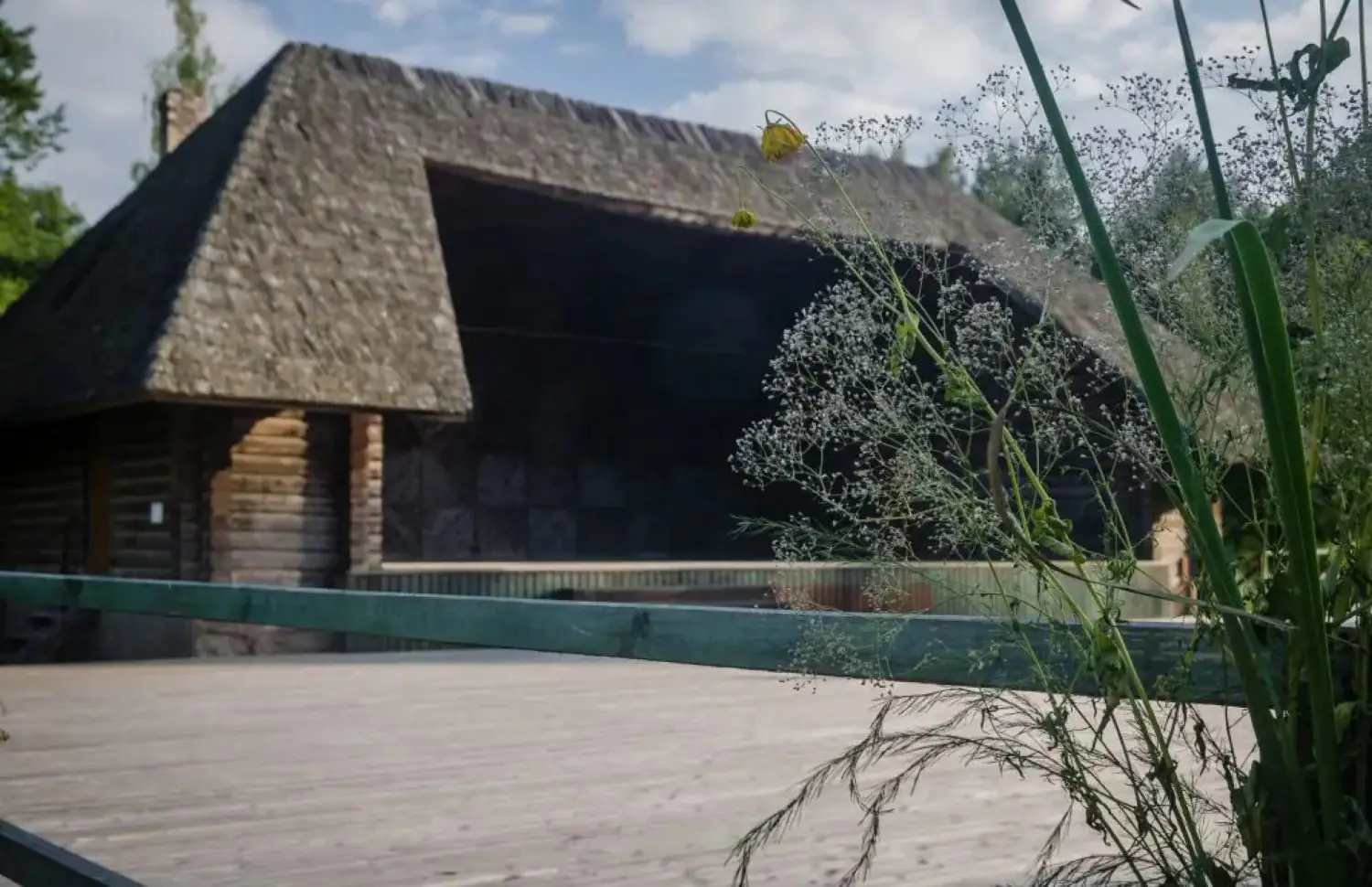
visit.smiltenesnovads.lv
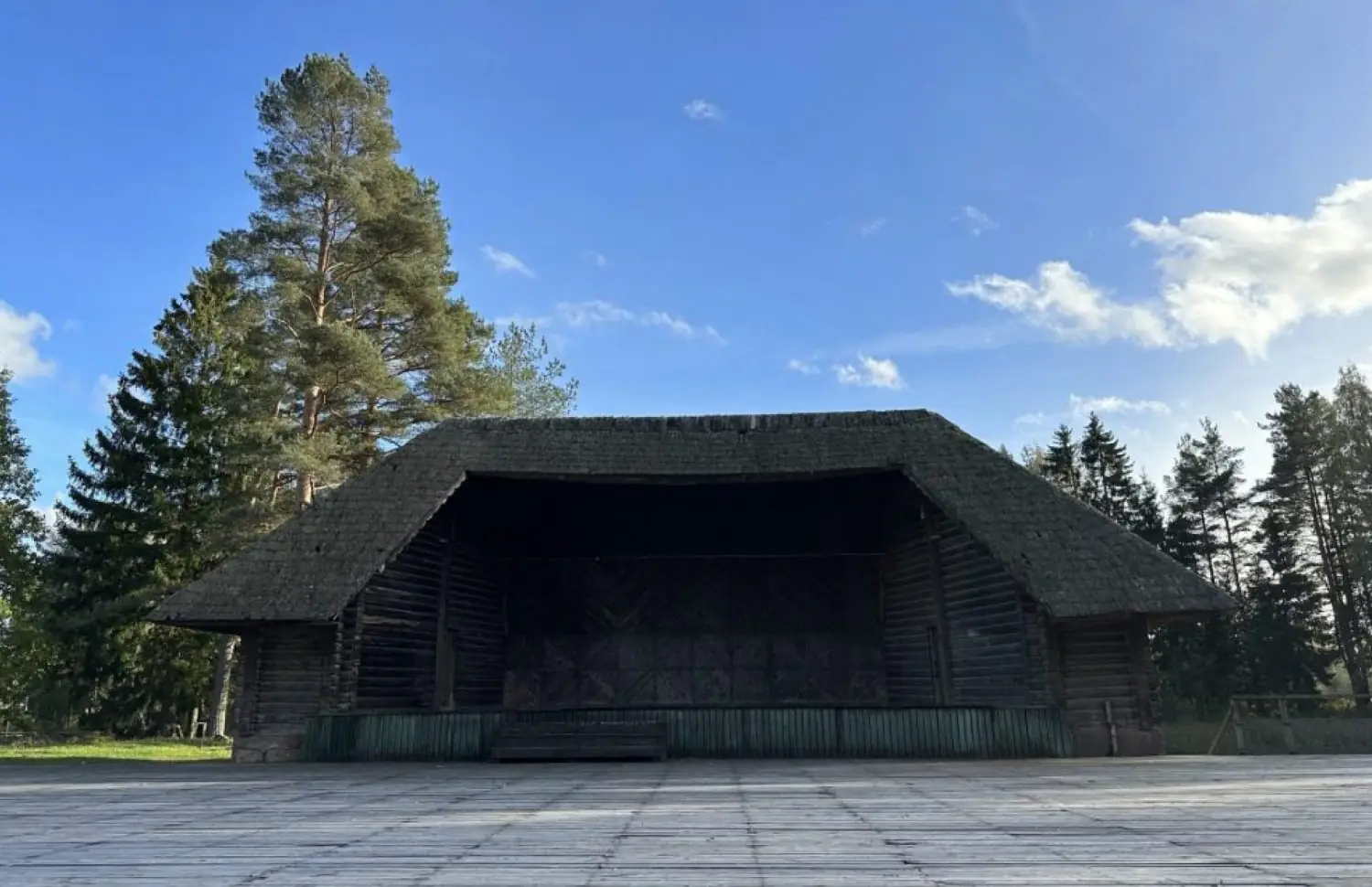
visit.smiltenesnovads.lv
A very similar wooden stage has been preserved in the village of Taurupe. Only if the previous project used a simple four-pitched roof, here it is more complex and traditional: a half-walm roof with four pitches. Walm is a triangular slope of the roof, running from its top to its base. A half-walm usually only takes up half the height of the roof. This type of roofing is widespread in many European countries.
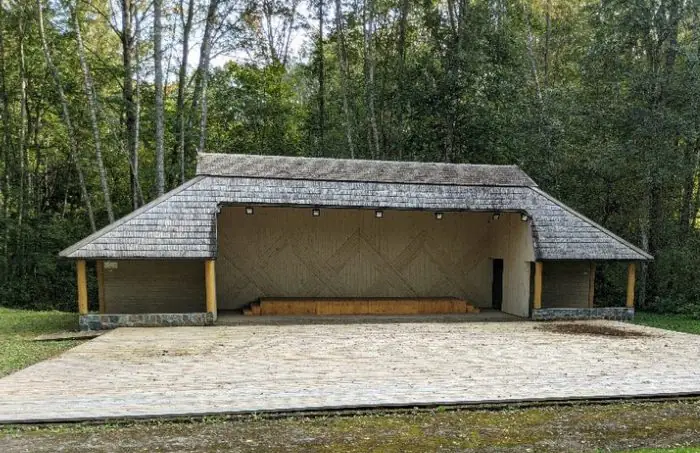
foursquare.com
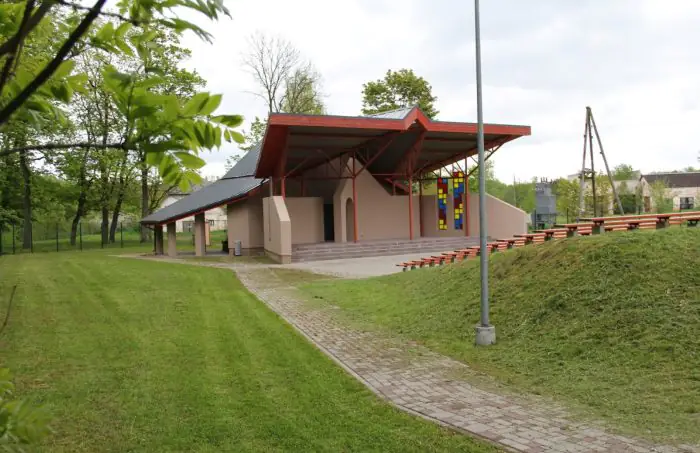
bildberg.lv
In a postmodern way, regional motifs are reinterpreted in the design of the stage in the village of Bēne. It was built just over ten years ago (in 2012), but its stylistics are influenced by Latvian architecture of the 1980s and 1990s. Sharp triangular and trapezoidal shapes are combined with stained glass windows—references to medieval urban buildings.
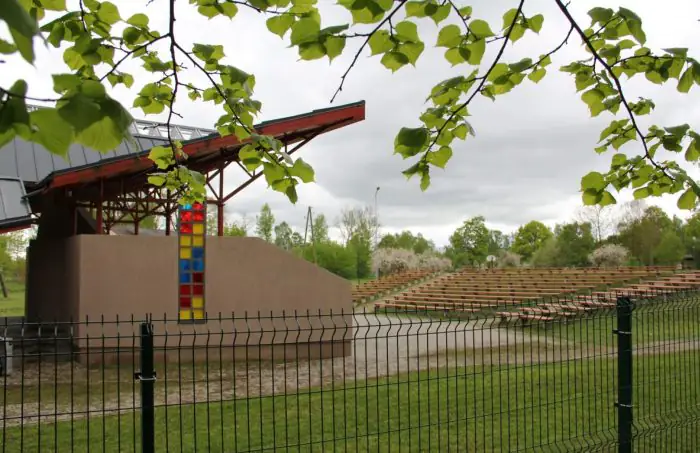
bildberg.lv
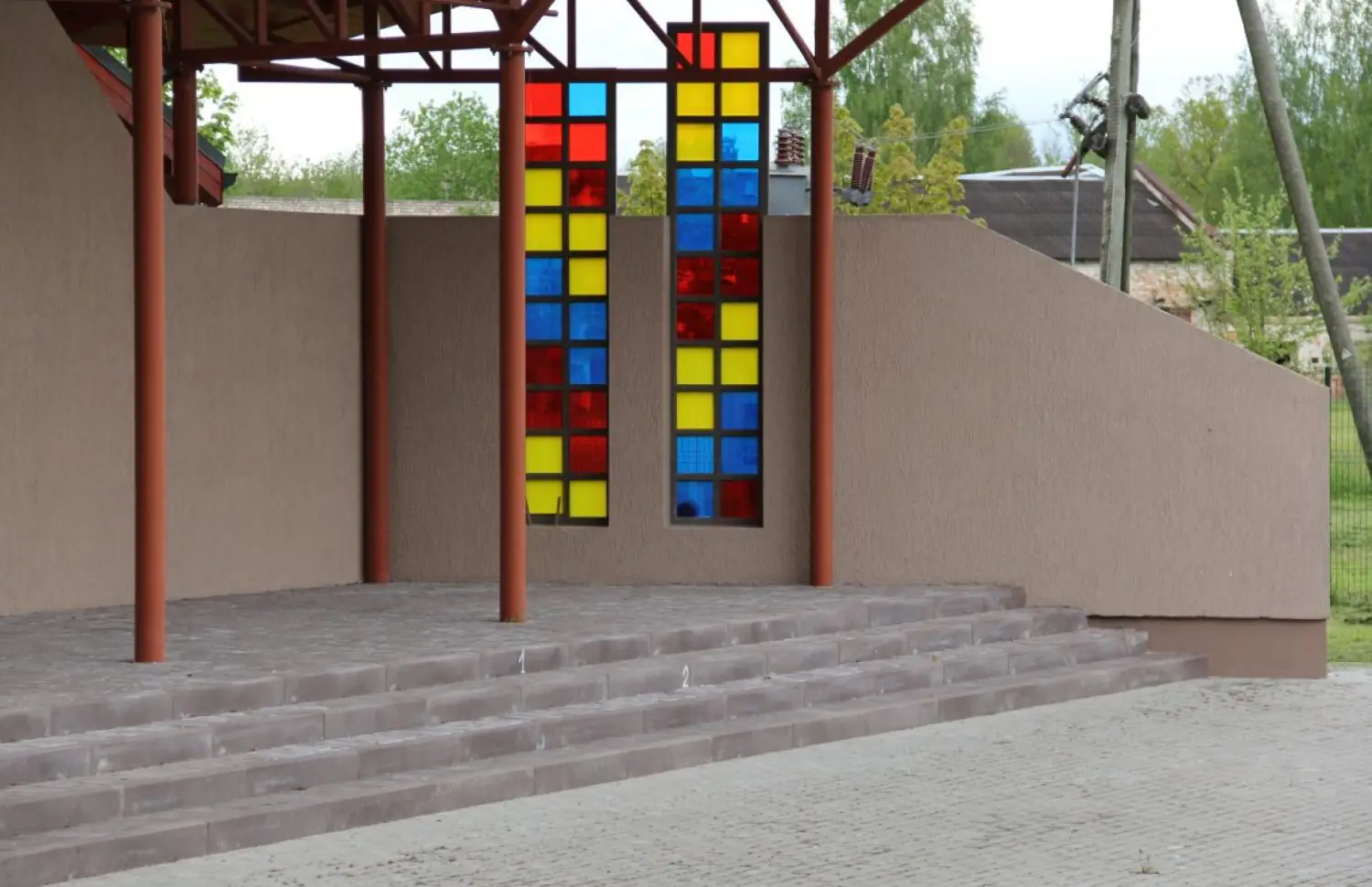
bildberg.lv
One of the first places in the collection of Latvia’s most unusual architectural forms is occupied by the late Soviet stage in Ape. The architects took a very unconventional approach to creating a memorable image for the stage. In addition to the usual stepped cascade, on which the choir stands during the performance of songs, L-shaped elements appeared on the edges of the stage: it is a very unusual solution for backstage.
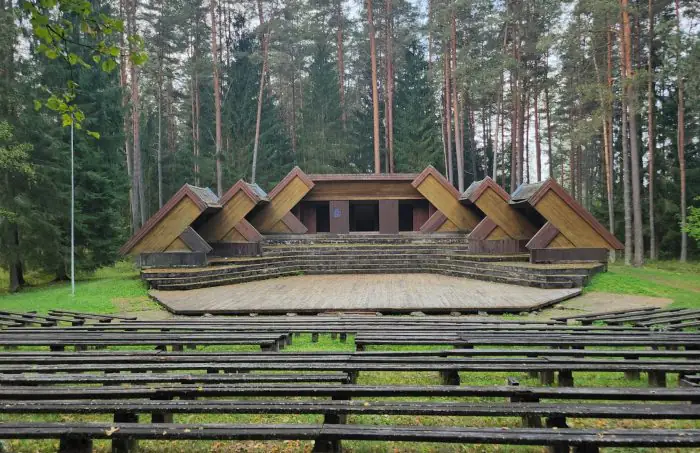
On the one hand, this is an ascetic and rational solution—quite in the spirit of modernism. On the other hand, in these forms one can also trace regional references to the pattern of traditional ornaments or sculptural carvings.
The wooden stage (Durbes estrāde) in the city of Tukums is an excellent example of the reinterpretation of the Latvian Art Deco style of the 1920s and 1930s.
This stage was built in 1963, when the dominant trend in architecture was modernism, which sought to internationalize artistic techniques, but it is arranged quite differently. There are clear references in the design of this stage to the regional tendencies of Latvian independent architecture, i.e. to the period between 1918 and 1940.
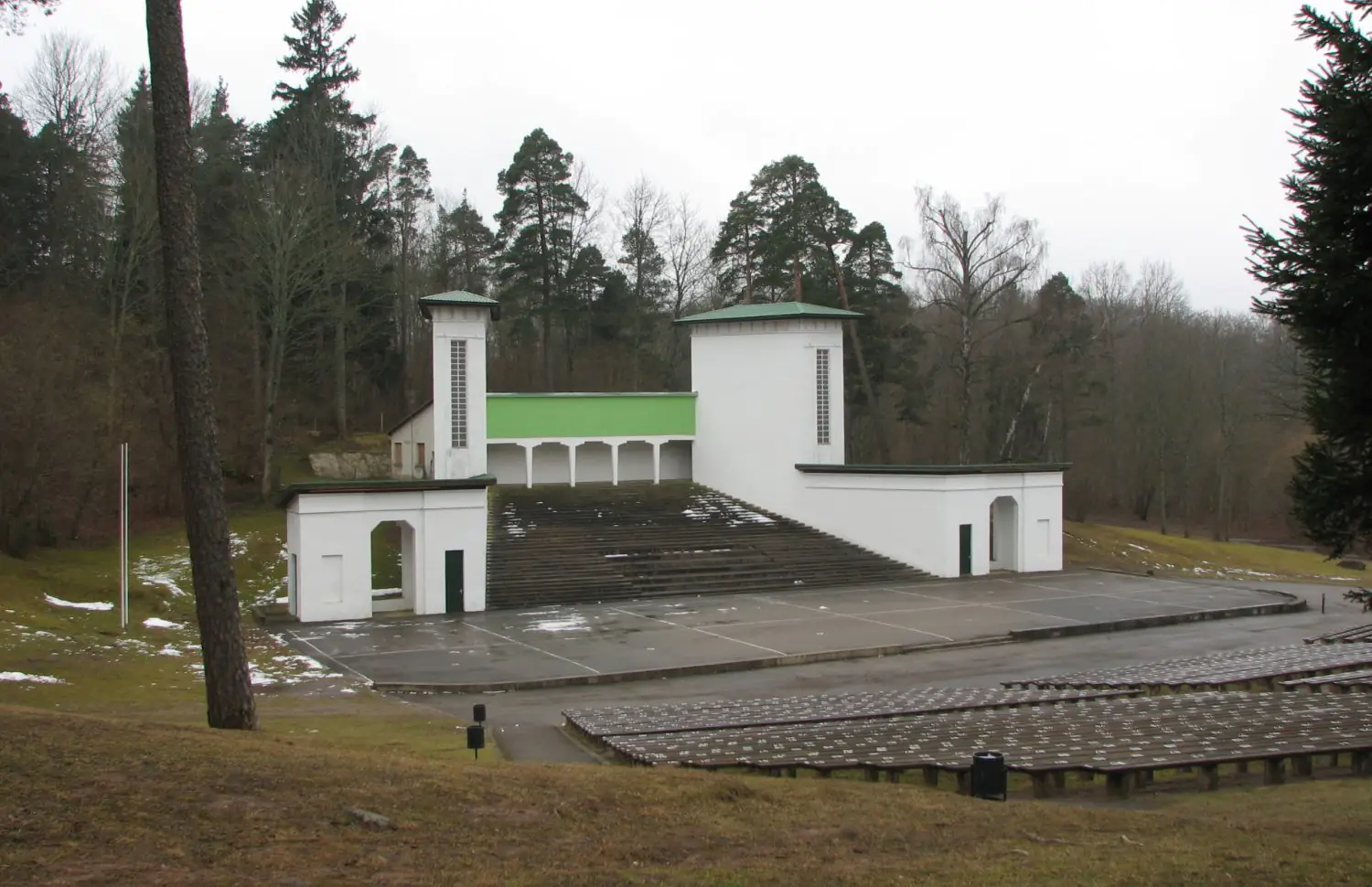
wikipedia.org
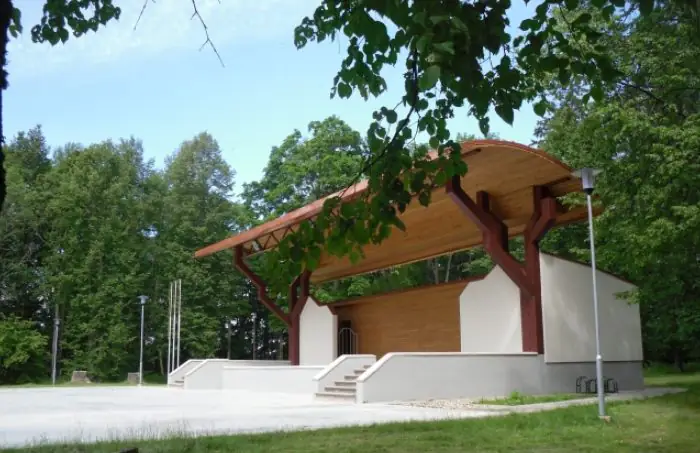
visitdagda.com
Another example of playing with regionalism is the stage in Dagda. The old stage, built in the Soviet era, was replaced by a modern one in 2011. The supports of the arc-shaped canopy are stylized as trees, and a lot of wood is used in the construction of the stage itself.
In Latvian culture, wood has an important meaning: remember the traditional peasant architecture or the oak wreaths at the Līgo Day. And in this case, the use of the shape of a tree is also a reference to the atmosphere of the park at the former manor house.
Internationalism
An interesting example is the stage in the village of Ļaudona, which is modernistically ascetic yet sensitive to folk traditions. It is essentially a hollow triangular pyramid with a choir on the steps inside. This form is often found in the style of Latvian rooftops and bus stops of the Soviet period.
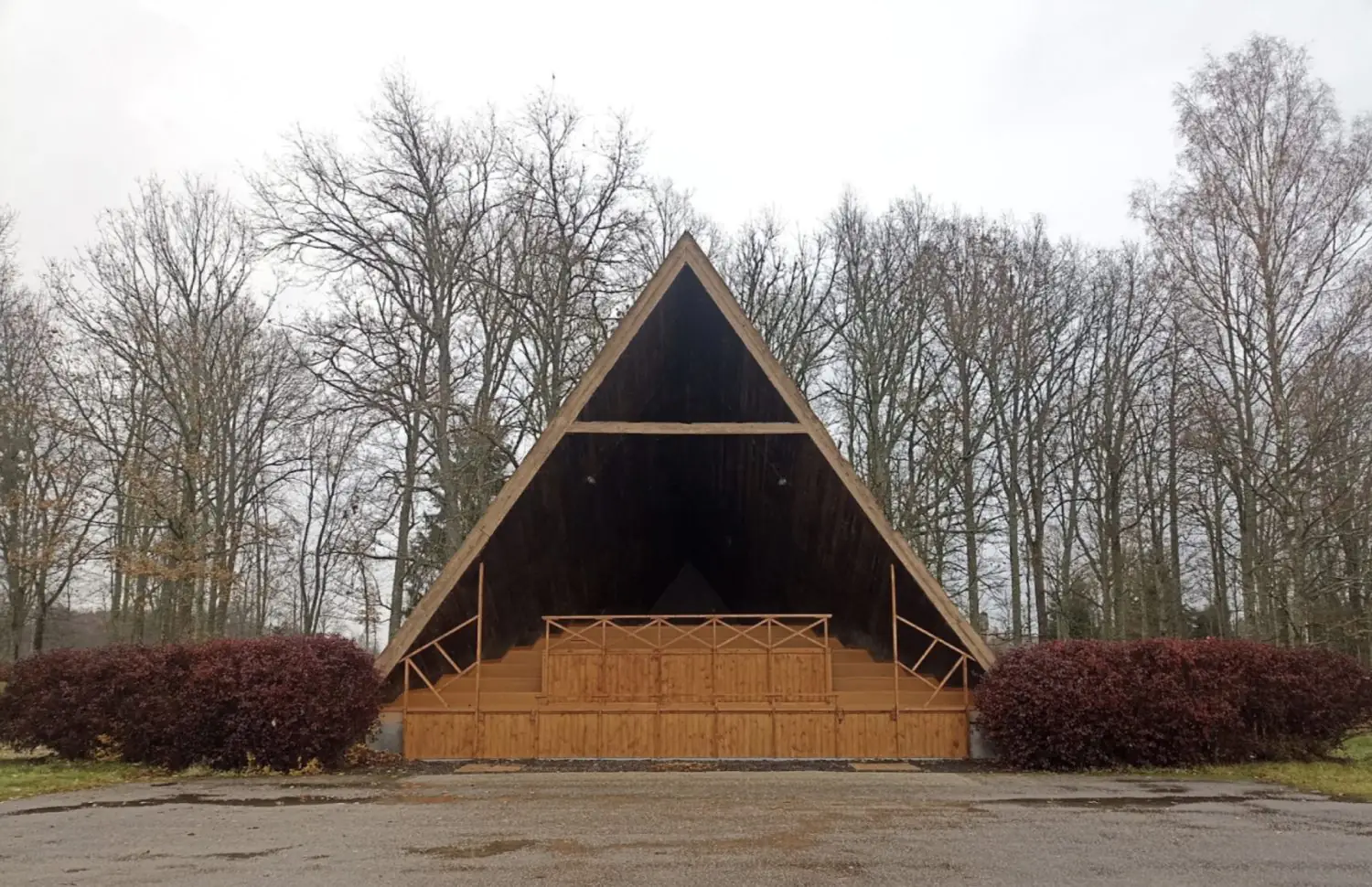
Photo: Aleksandr Semenov
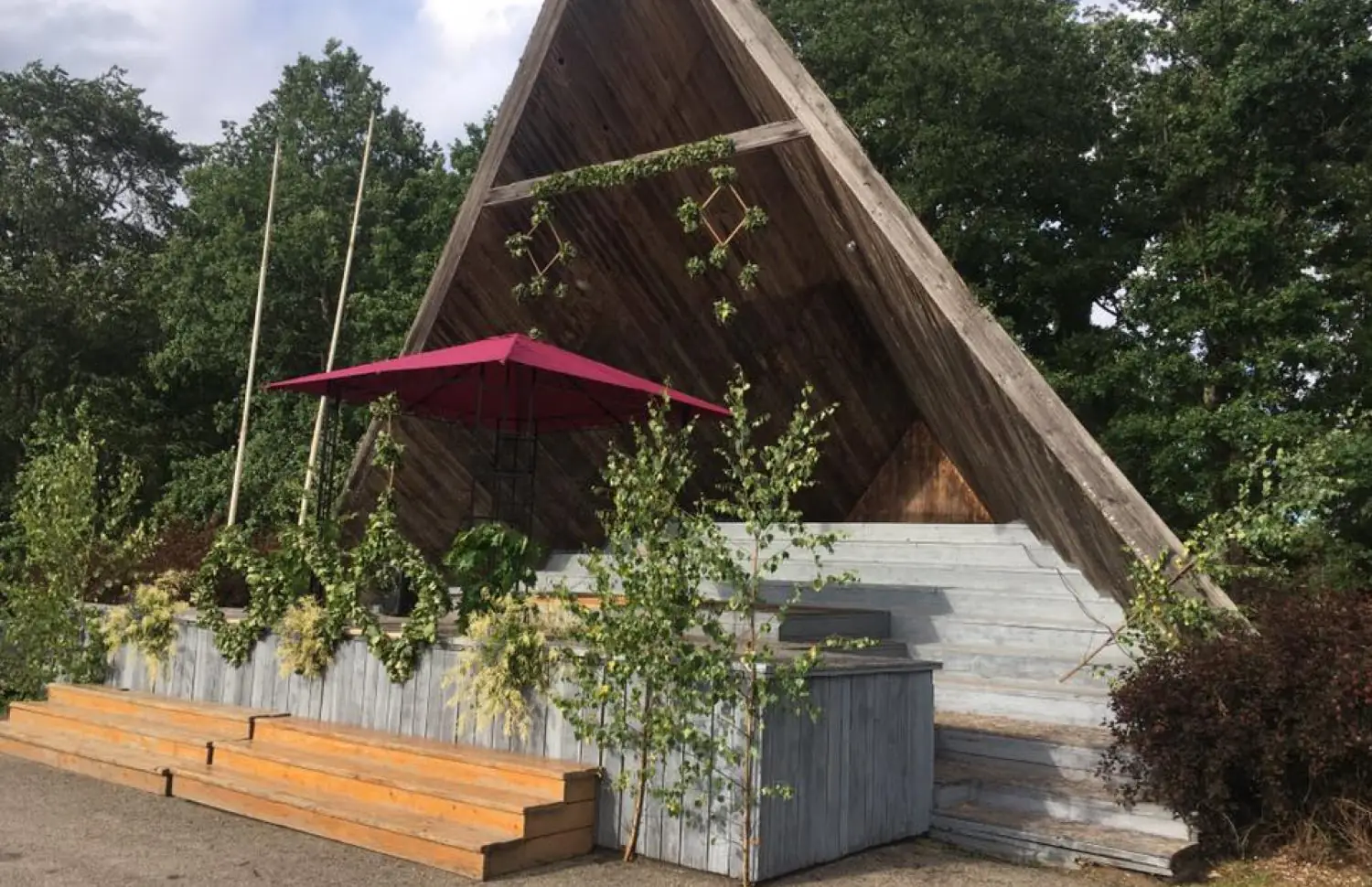
Photo: Aleksandr Semenov
One of the most common shapes of Latvian stages is semicircular, resembling the sun rising from behind the horizon.
A perfect example of the rising sun motif is the stage in the village of Krimūnas. It was built in 2017, designed by Anita Zariņa. The structure is based on the simple geometric shape of a quarter sphere. Well, almost a sphere. The structural elements converging to the center of the stage canopy resemble sun rays.

gadabuve.lv
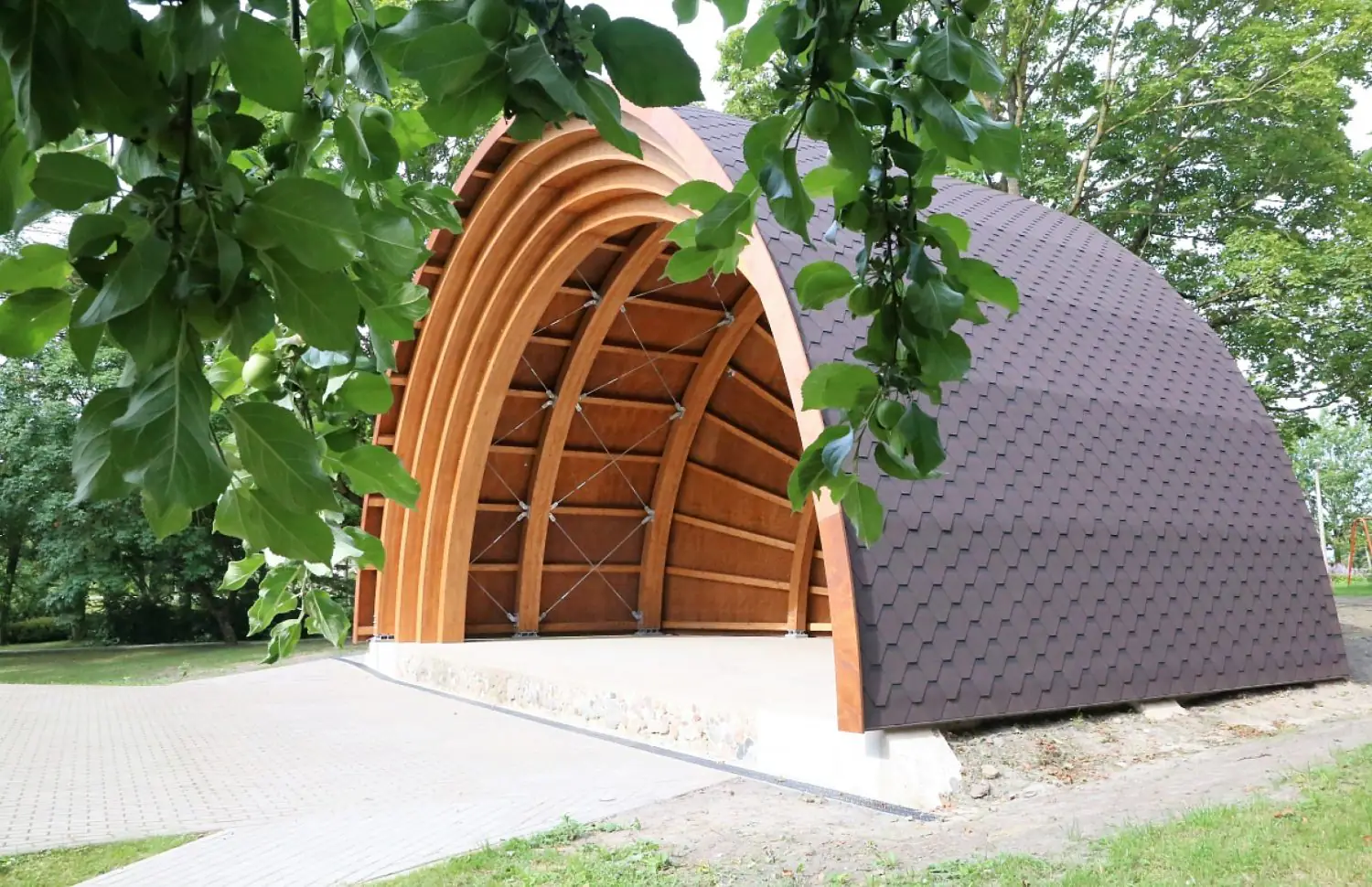
gadabuve.lv
The stage in the town of Pāvilosta evokes a very different association. Its shape is also rounded, but more biomorphic and intricate. In it one can see references to a clam shell, and this is very contextual: Pāvilosta is a seaside town that played an important role in the history of Latvian fishing.
The first, modernist, stage on this site was built in 1969: an ascetic rectangular shape with two decorative arches made of gray silicate bricks. The current rounded stage appeared in 2013 in place of the dilapidated Soviet stage.
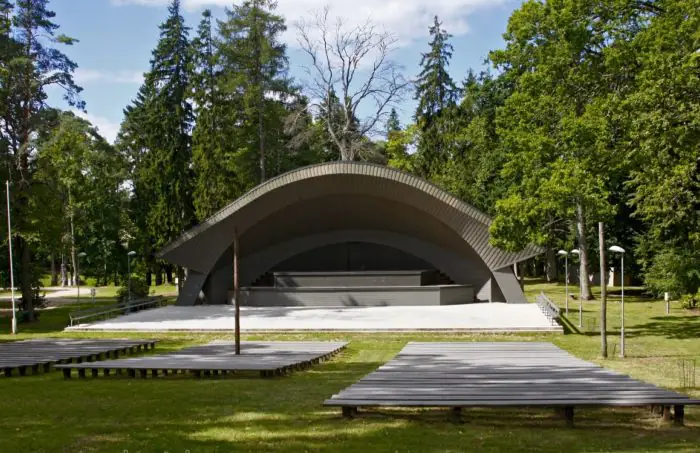
redzet.lv
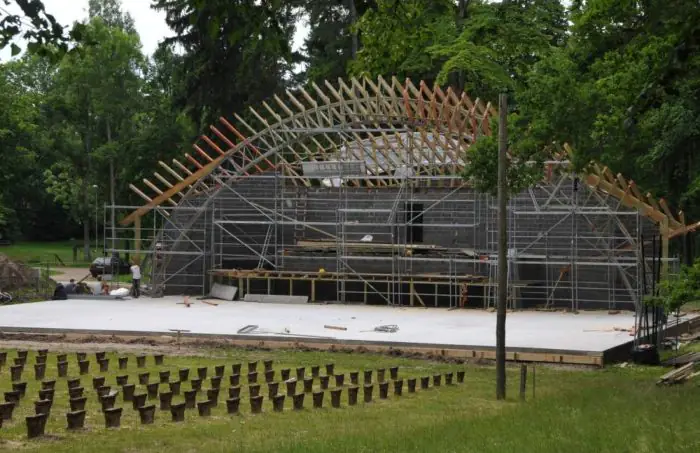
arhivs.rekurzeme.lv
The open-air stage in Olaine is reminiscent of the works of the famous Latvian avant-garde artist Gustavs Klucis. Vigorous forms, contrast of red and black colors, sharp diagonals of stairs—all this is characteristic of his works of 1920–1930s. There are also references to the works of the artist’s iconic contemporaries, such as the works of the functionalist Le Corbusier and the constructivist Konstantin Melnikov.
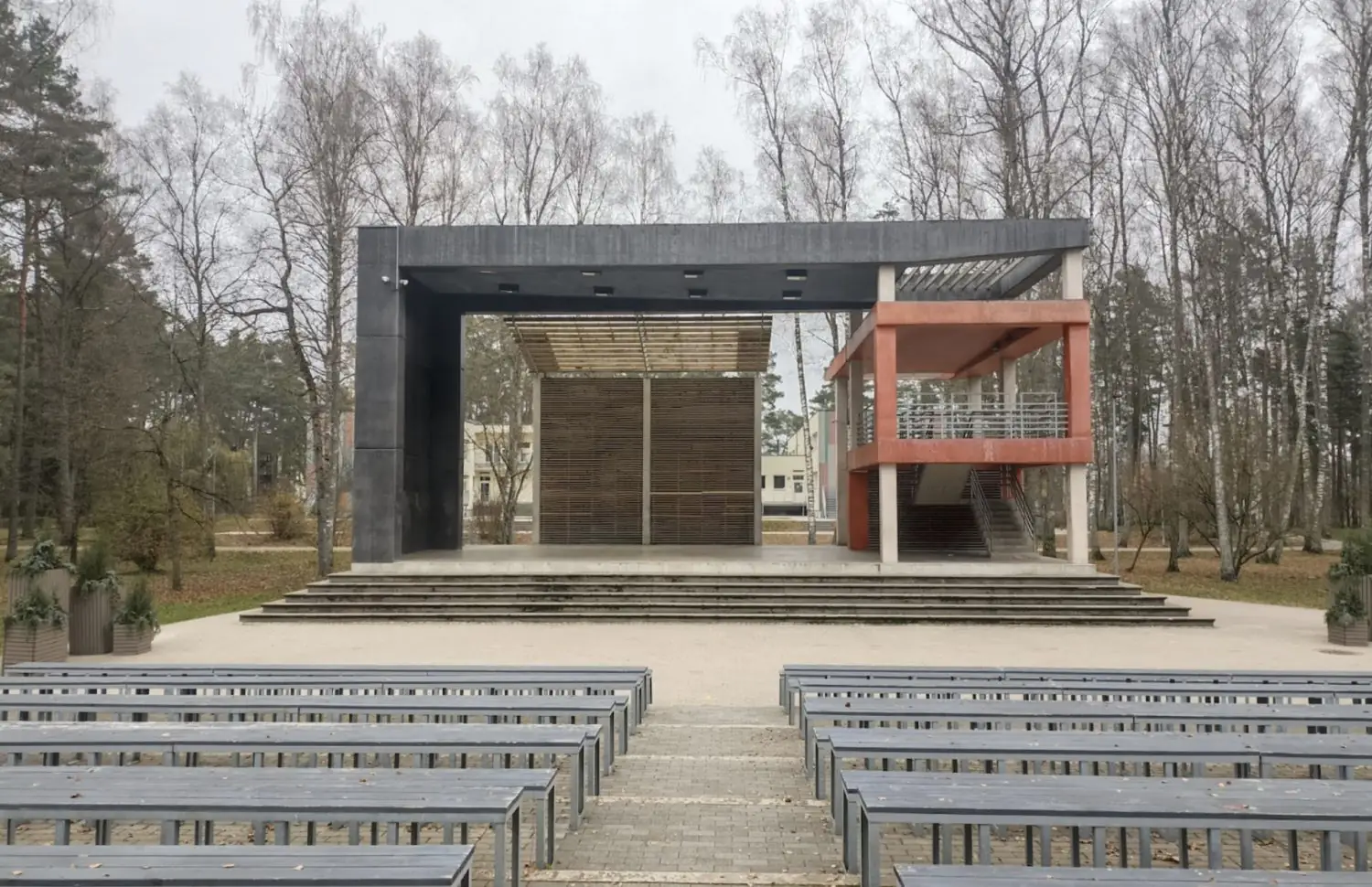
Photo: Aleksandr Semenov
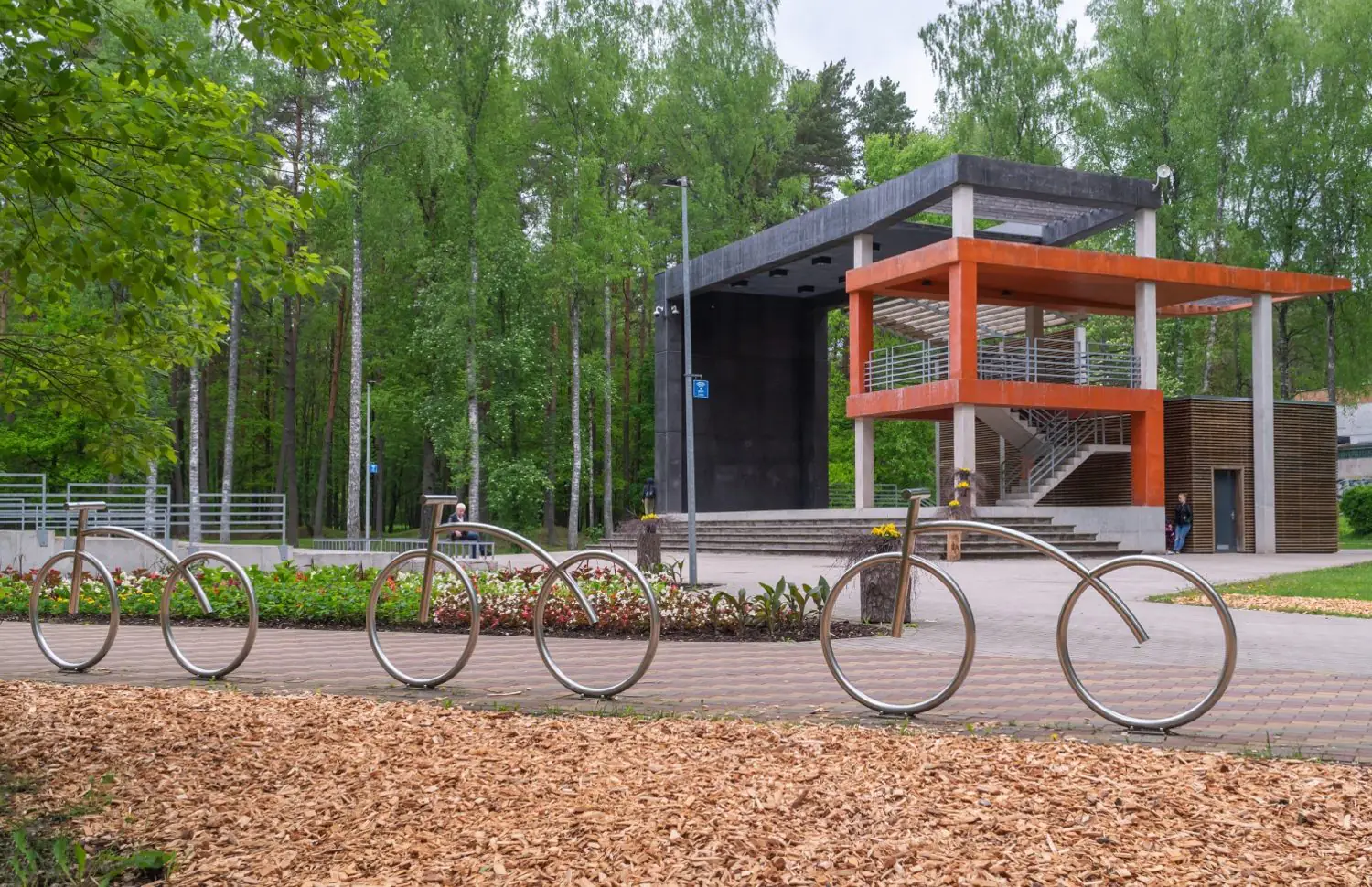
Photo: Aleksandr Semenov
The unity of architecture and nature can be observed in the modern stage in the small village of Dikļi. Here the stage is located in the center of the stands, which are arranged around it in the form of an asymmetrical ring. The seats cascade down low hills. A river flows just a few meters away, and beyond it are panoramas of vast fields.
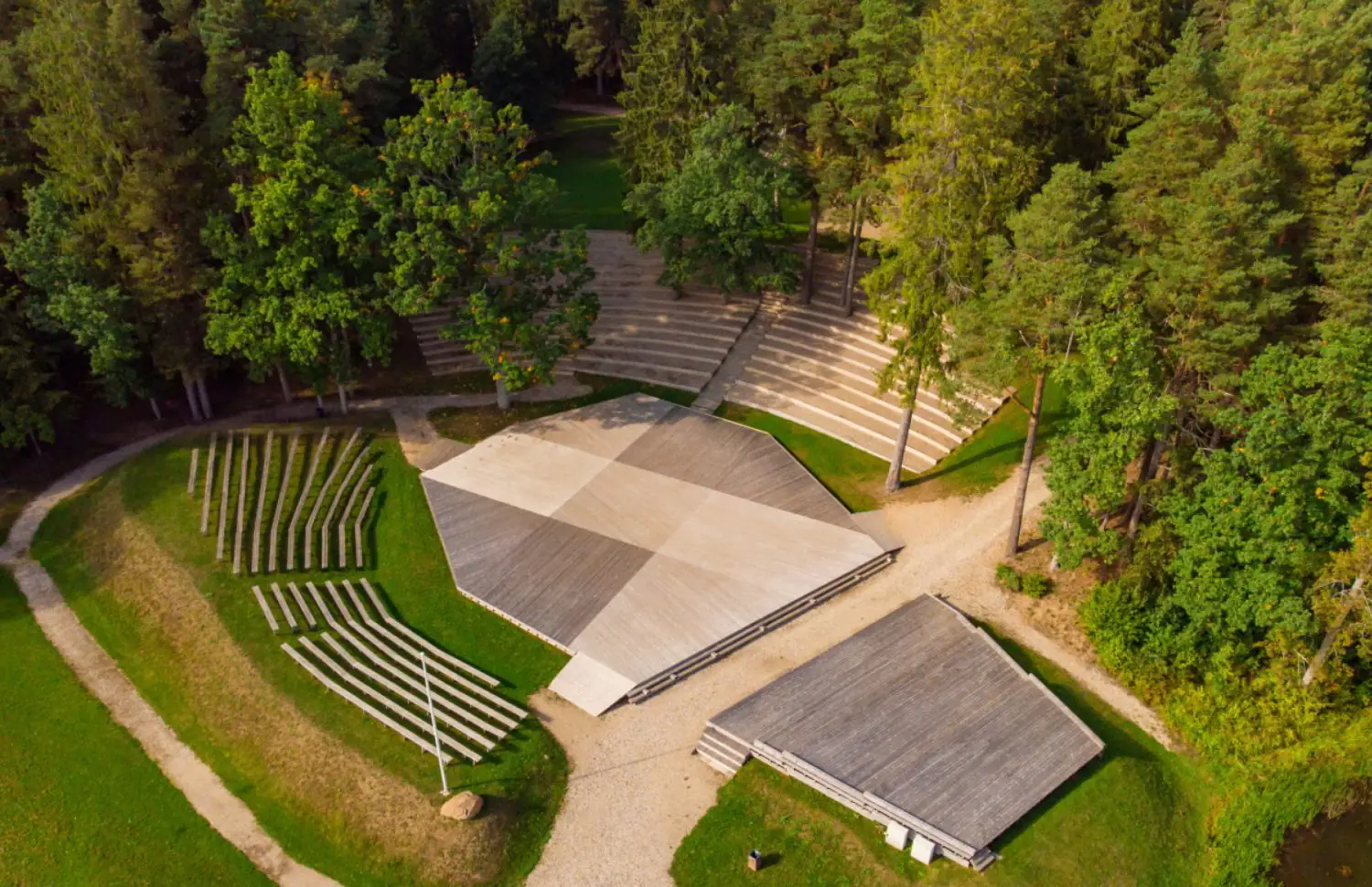
Photo: Uģis Brālēns
ziemellatvija.lv
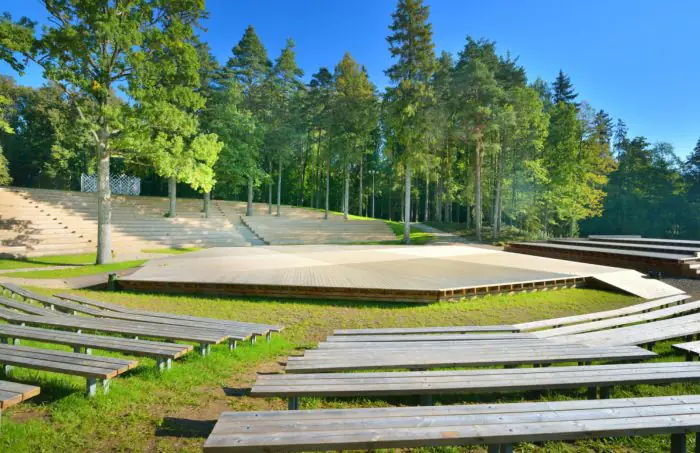
Photo: Uģis Brālēns
ziemellatvija.lv
The architects skillfully used the topography of the Jāņkalns mountain to create the open-air stage in Smiltene. The hilly and forested terrain has a complex, but at the same time interesting relief with picturesque conifers. Nature itself has created all the conditions for such a stage to appear: there are benches on the slopes, amphitheater surrounding the stage, and thin trunks of pine trees do not interfere with the audience at all—they become a kind of natural backdrop around the seats.
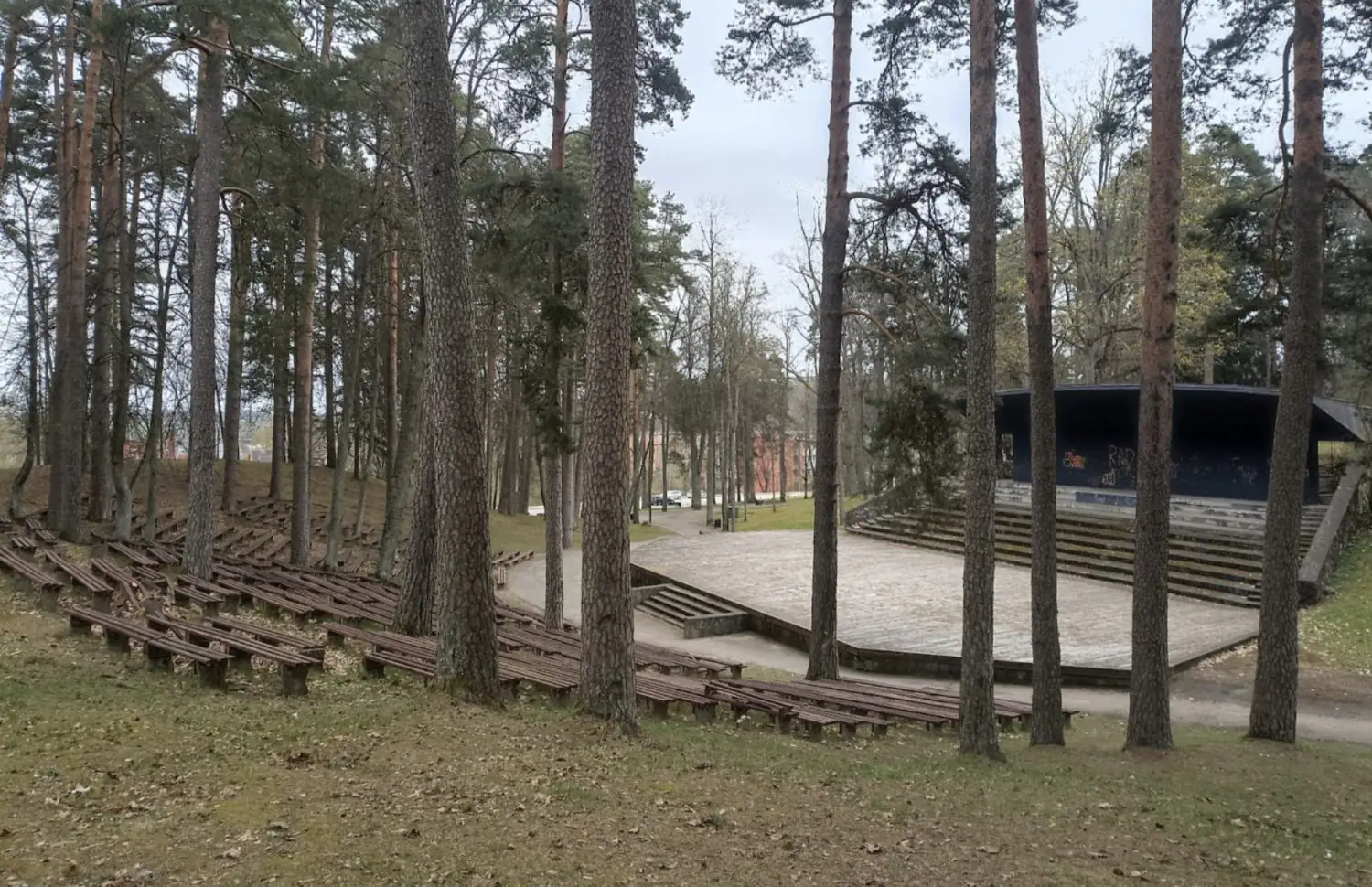
Photo: Aleksandr Semenov
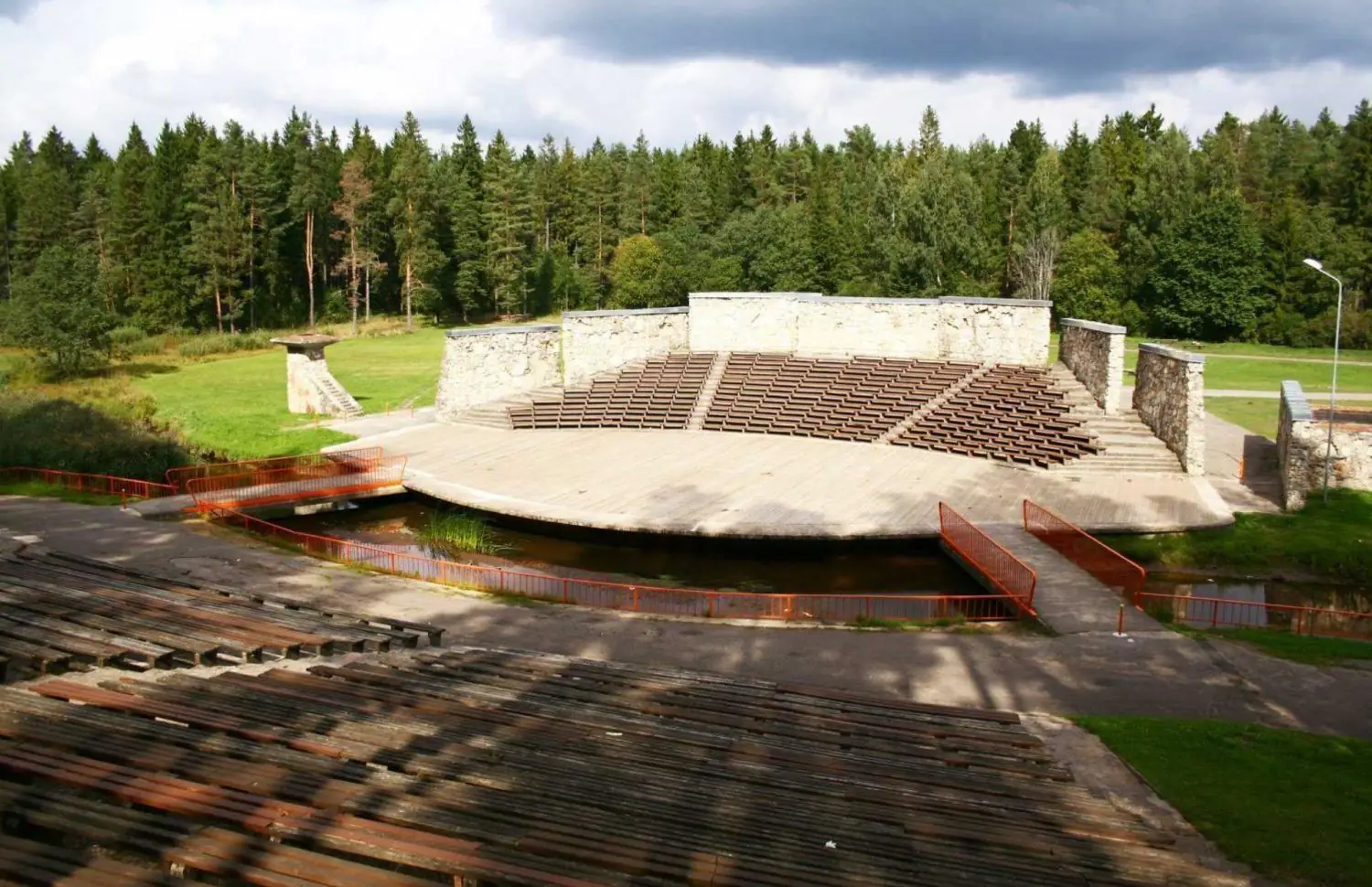
visitvalgavalka.com
In addition to relief, the geometric pattern of the stage sometimes includes rivers. In Valka and Piltene, the stage is separated from the audience stands by the wide Pedele River and a small channel.
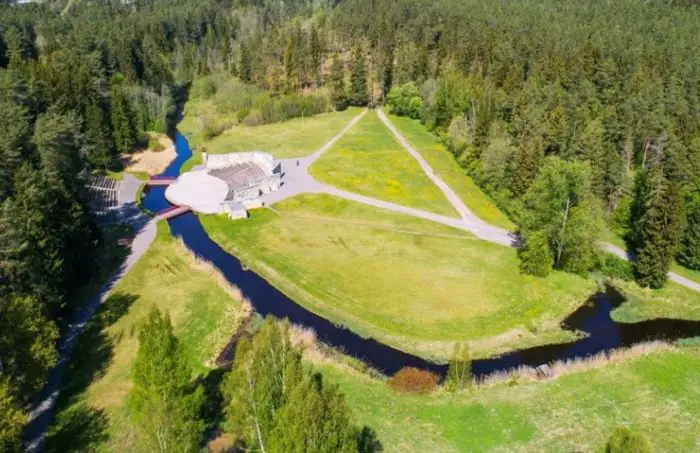
skolenuekskursijas.lv
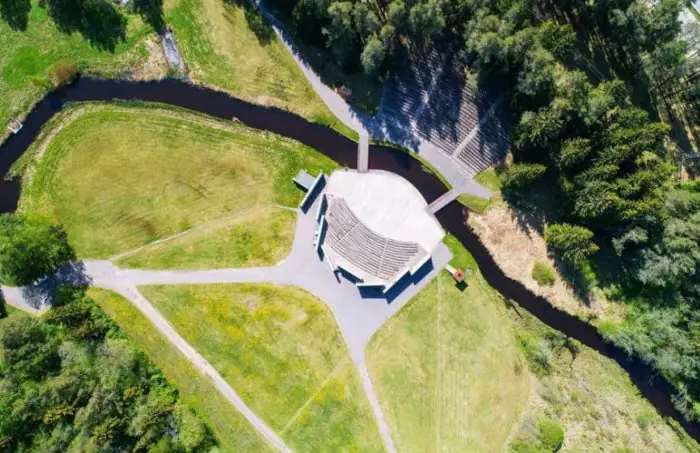
skolenuekskursijas.lv
Many modernist open-air stages had expressive canopies over the scene. As a rule, the shapes of such canopies tended towards a sharp triangle. Such stages can be seen in Baltinava, Alūksne, Višķi and many other places—they started to be built in the 1960s and are still being built today. The reconstructions of the old Soviet bandstands in Alūksne and Višķi were designed by the architectural studio Arhitekta L. Šmita darbnīca in 2010–2011.
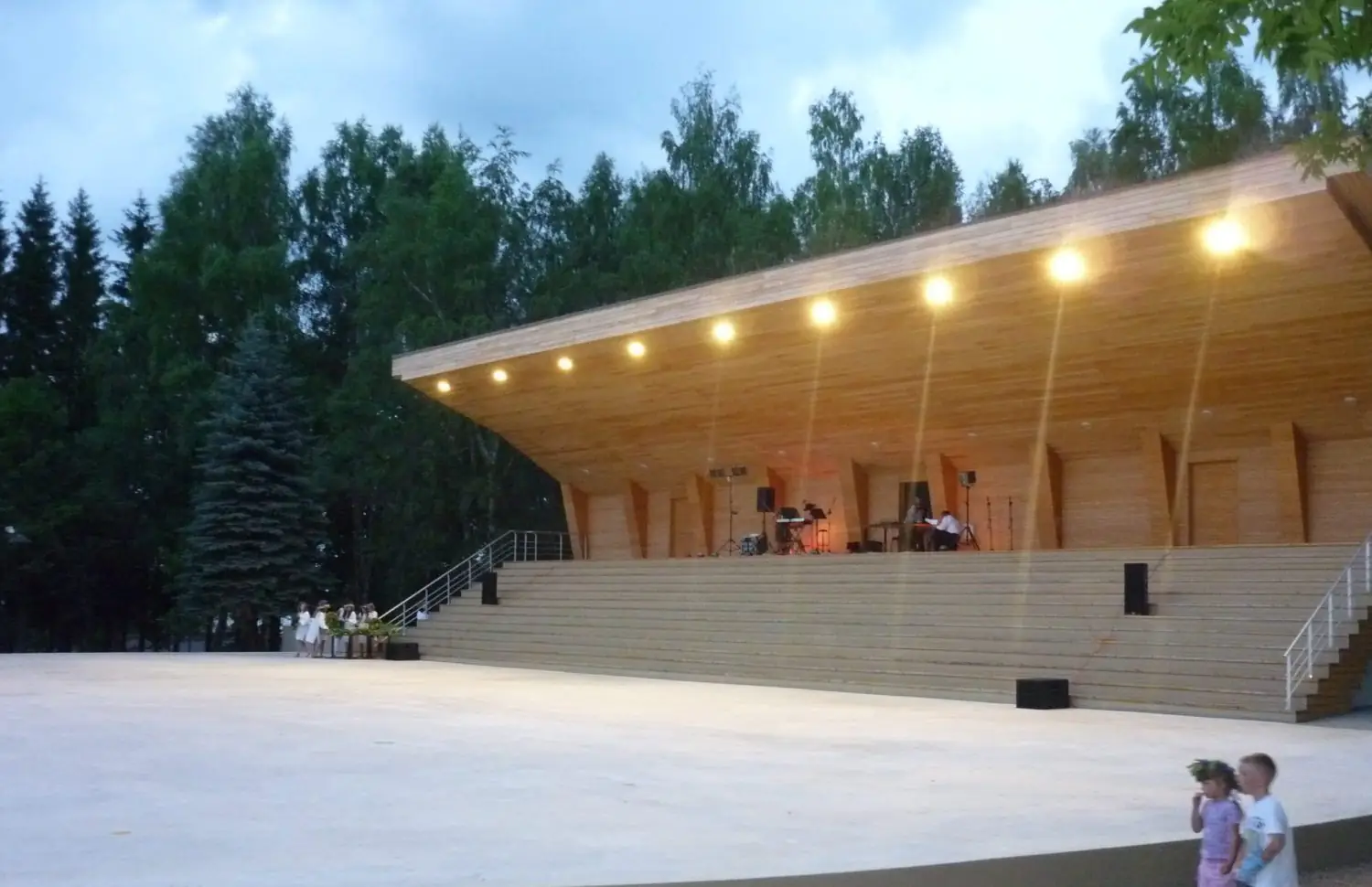
visitdaugavpils.lv
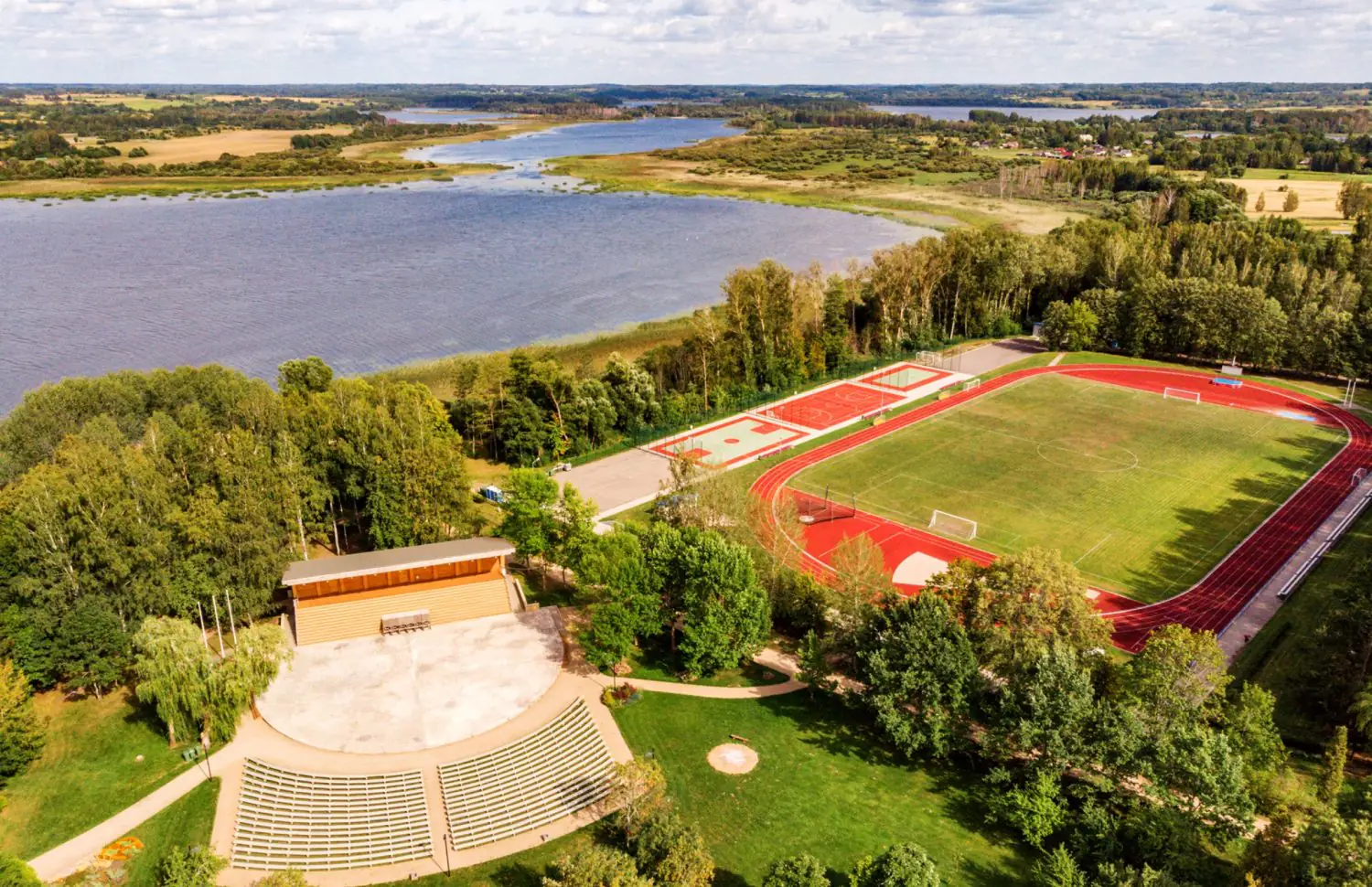
visitdaugavpils.lv
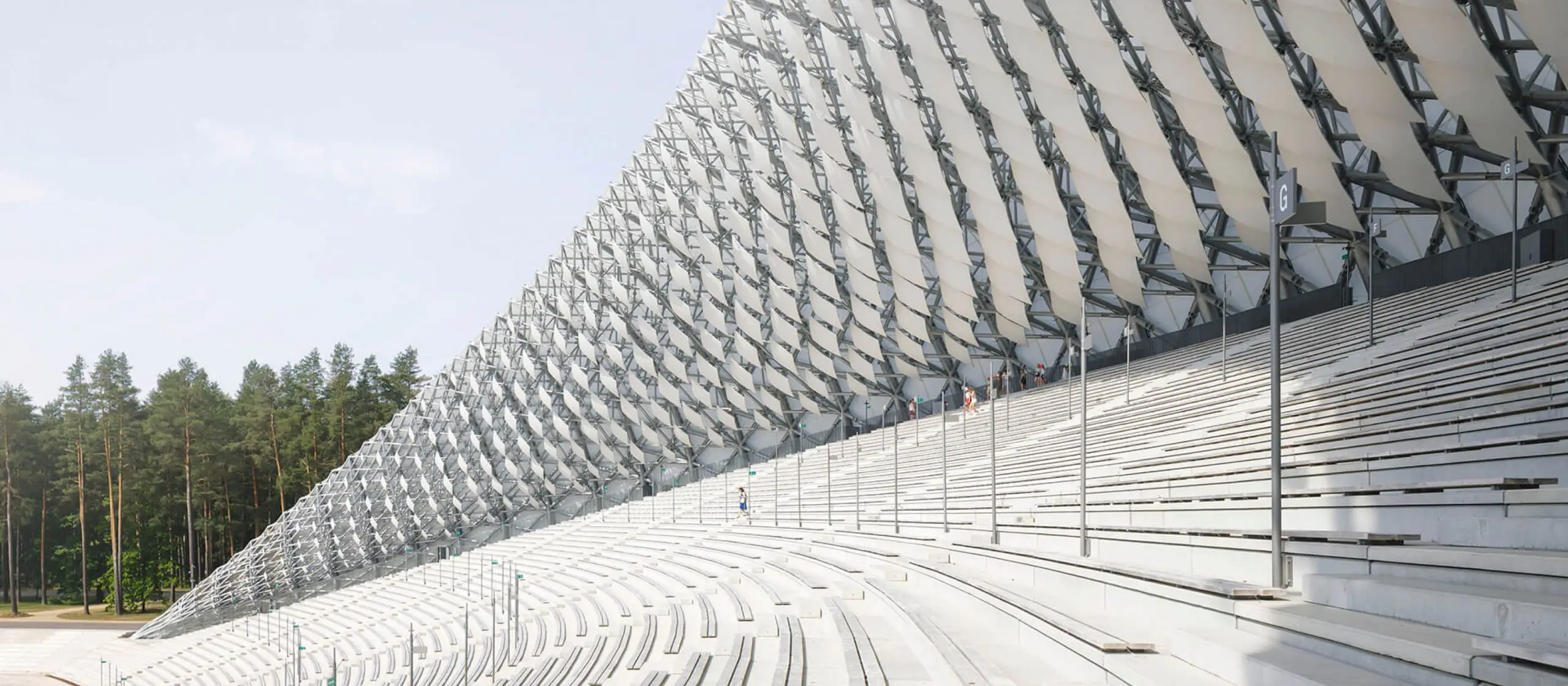
stirworld.com
Open-air stages with a canopy for spectators
There are only a few stages with a roof to protect the audience from precipitation in Latvia: all of them are located near the coast of the Baltic Sea and the Gulf of Riga, i.e. in places where strong winds and rain often blow.
The Vējturu nams concert hall in Jūrkalne is characterized by its original design. Its cylindrical shape is divided into several functional sectors: a stepped cascade on which one can simply relax or sing choral songs, an upper viewing platform, and a space under the wave-shaped wooden roof where people hide from the weather—all these parts are located around an existing dry tree.
The artist and musician Igo thought up the first concepts for the extraordinary concert hall back in 2003. The current project was only realized by the end of 2019.
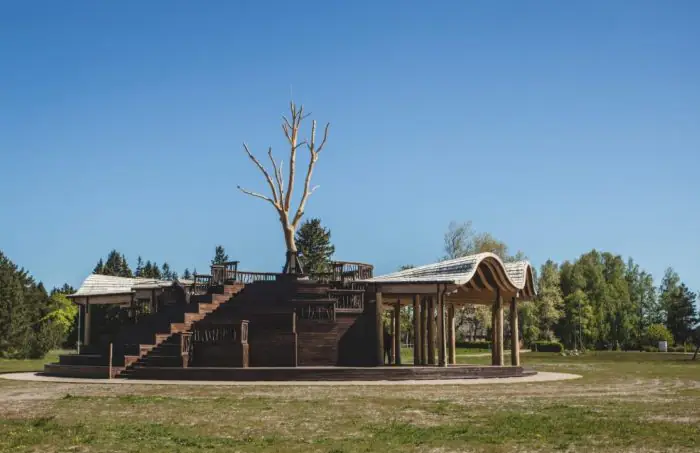
atrastalatvija.lv
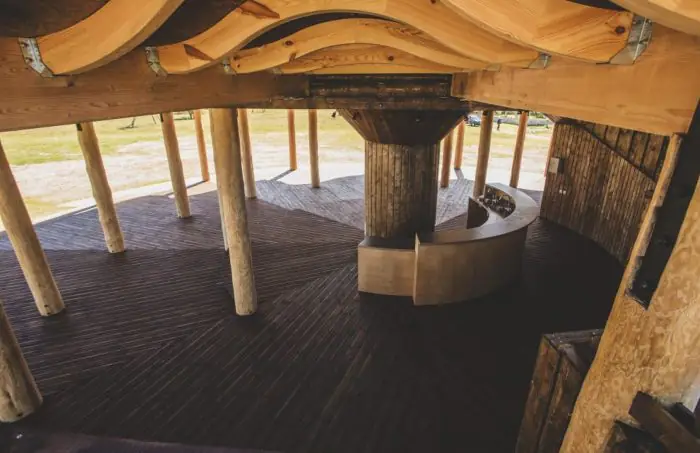
atrastalatvija.lv
In the same year, 2019, an indoor concert hall for 2,000 people was opened in the village of Roja. The shape of the stage is geometrically very simple: a dynamic angular roof standing on massive vertical pillars. This design makes the acoustics better. The authors of the project have well integrated the building into the landscape: the seats for the audience are located on the slope of a small hill, from where the stage is clearly visible.
Another important object is the Liepāja open-air Concert garden «Pūt, vējiņi!» (named after a famous song): an entire indoor concert hall without walls, one of the oldest in Latvia. The old concert hall “Pūt, vējiņi!” was one of the two stages in Latvia with a roof for the audience. The other one, also known outside the country, is located in Jūrmala.
The Soviet building “Pūt, vējiņi”, built in 1964, was dismantled, and by 2022 a new structure took its place.
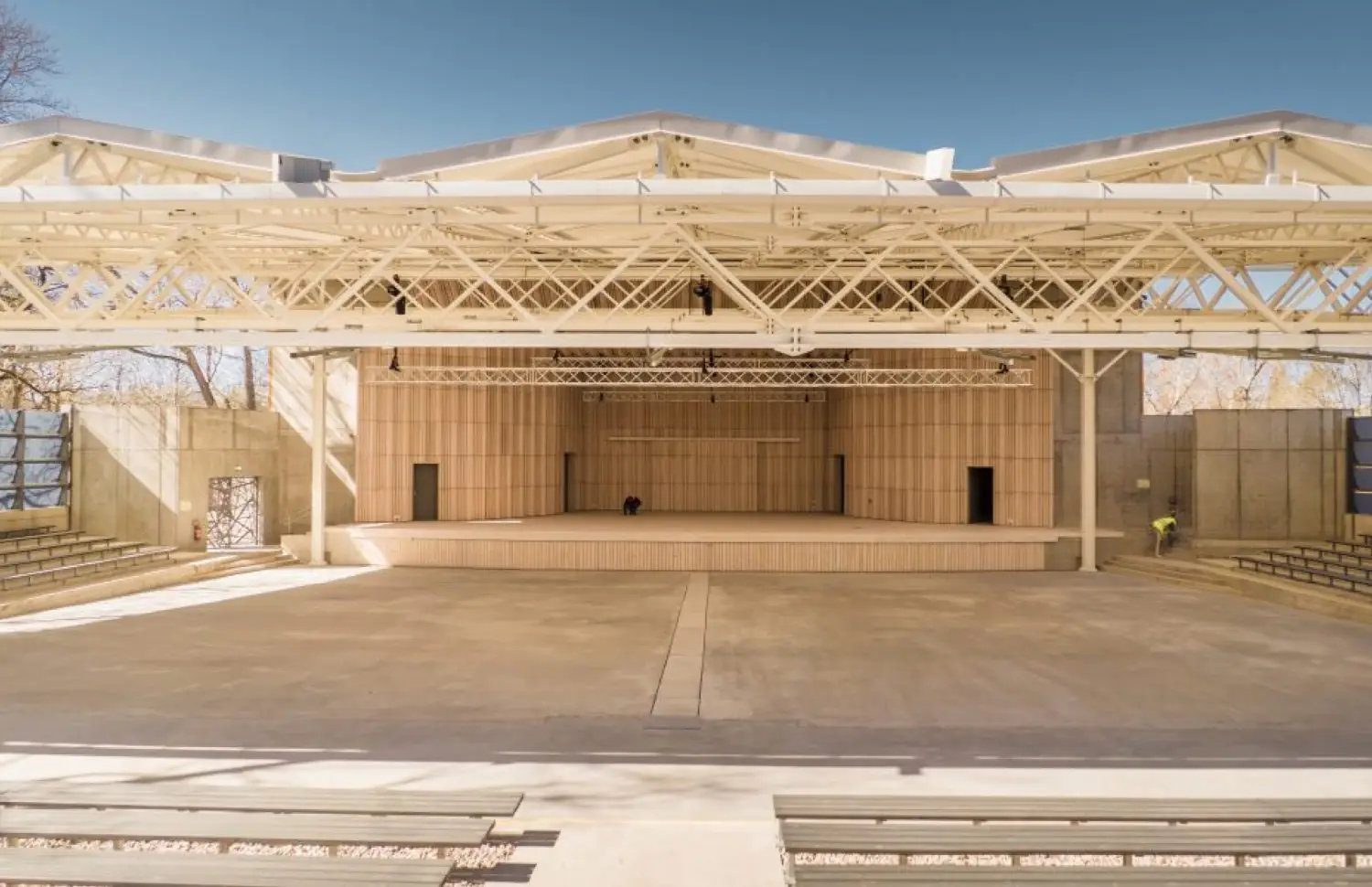
liepaja.lv
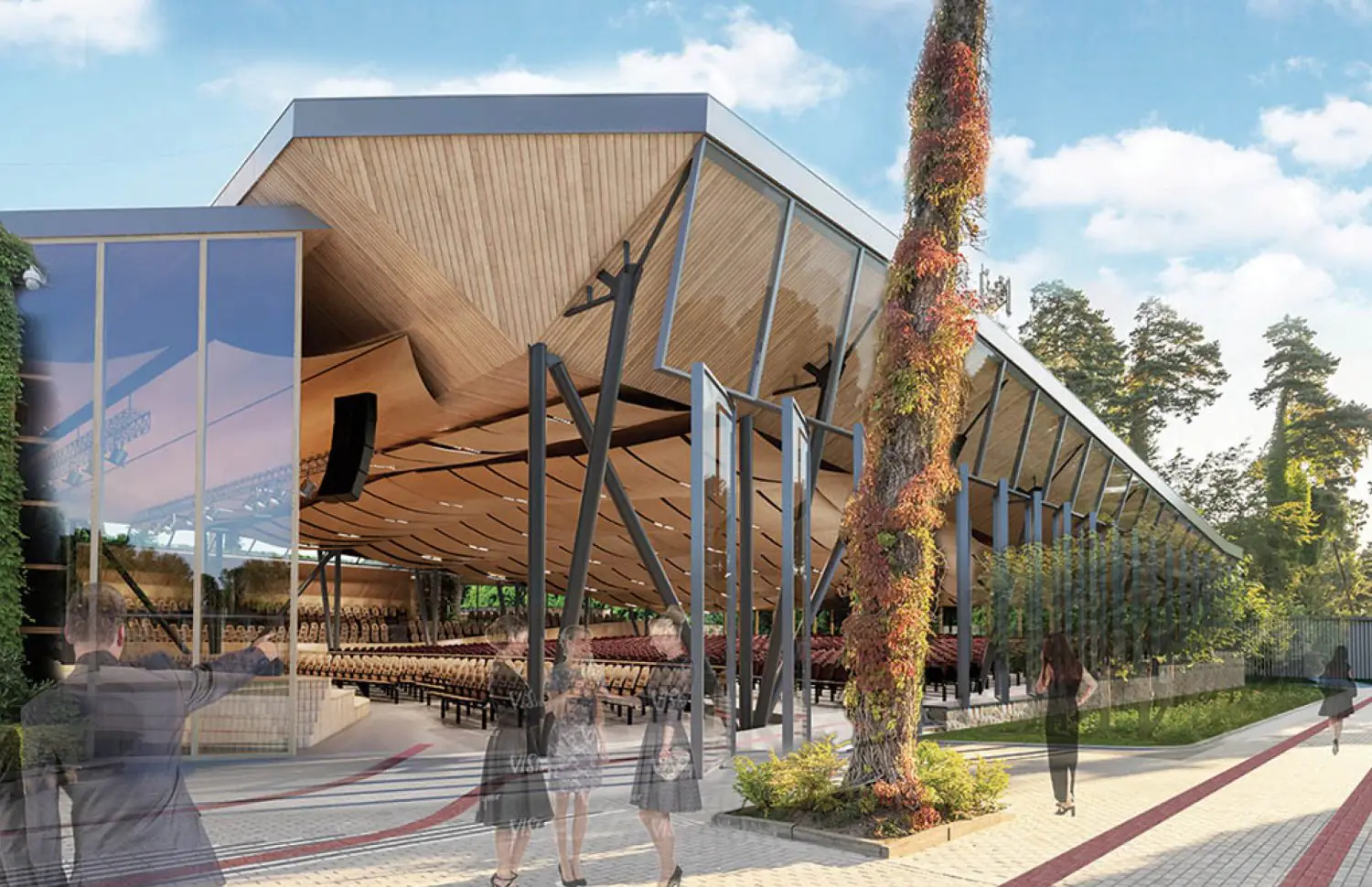
a4d.lv
Jūrmala also has a recognizable summer stage, one of its trademarks. Above the Dzintaru koncertzāle concert hall is a distinctive roof on metal supports, clad in light-colored wood. The roof was built in 1959–1962 to the design of architect Modris Ģelzis.
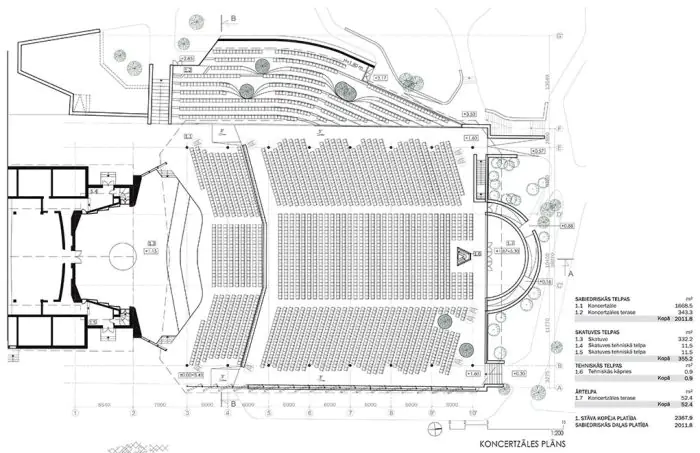
a4d.lv
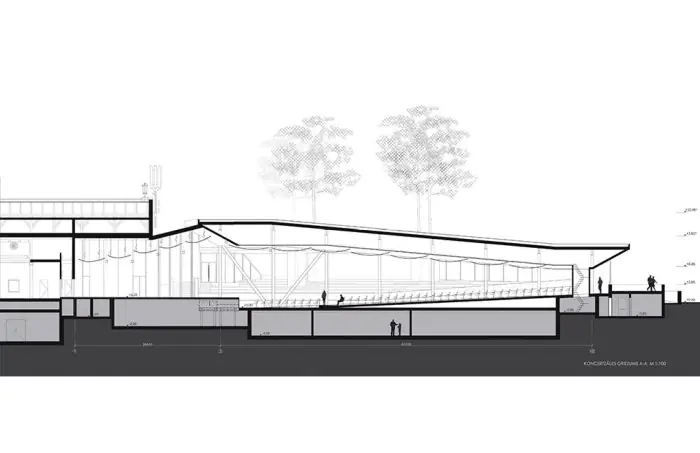
a4d.lv
Reconstruction and demolition of open-air stages
In recent years, stages in Latvia have been actively rebuilt. New ones, sometimes completely different in style, are appearing in place of the old ones. For example, in Ropaži a few years ago, a stage with a stunning multifaceted shape was dismantled. A new one has not yet appeared in its place.
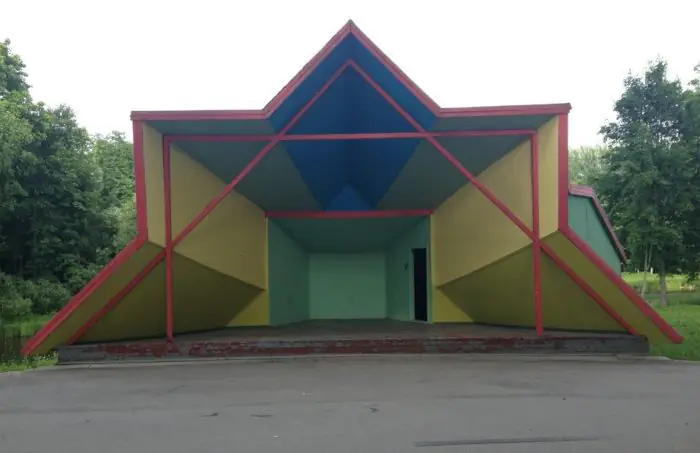
foursquare.com
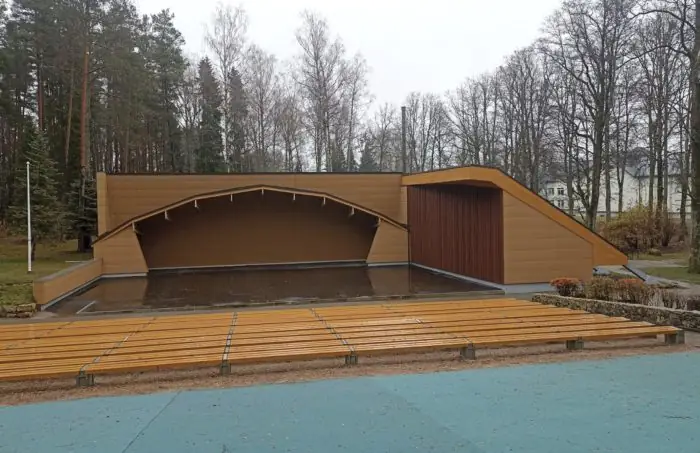
Photo: Aleksandr Semenov
The open-air stage in Jumprava village looks very peculiar. It was built in the late Soviet years, and in 2023 it was reconstructed, partially preserving its unique shape.
Above part of the main stage there is an expressive, but rather standard arc-shaped roof (in the Soviet project its design was more laconic). And on the right side, an additional building adjoins the stage, which now houses a checkroom and a storage room. Thus, the stage consists of an open part and two volumes connected to each other at an angle of 90°. Underneath the auditorium seats there used to be a cafe, the facade of which is decorated with boulders—it has been restored almost unchanged.
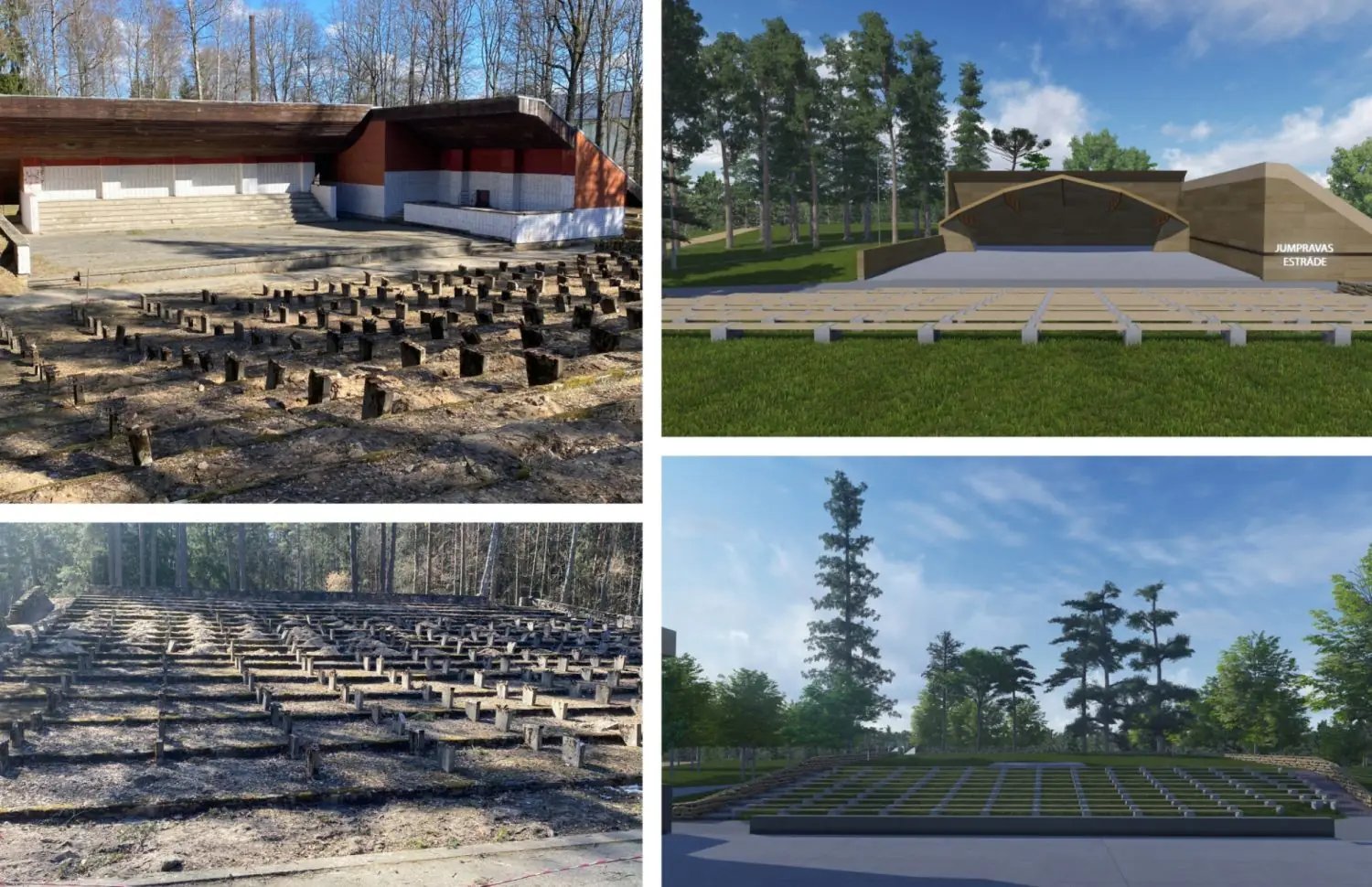
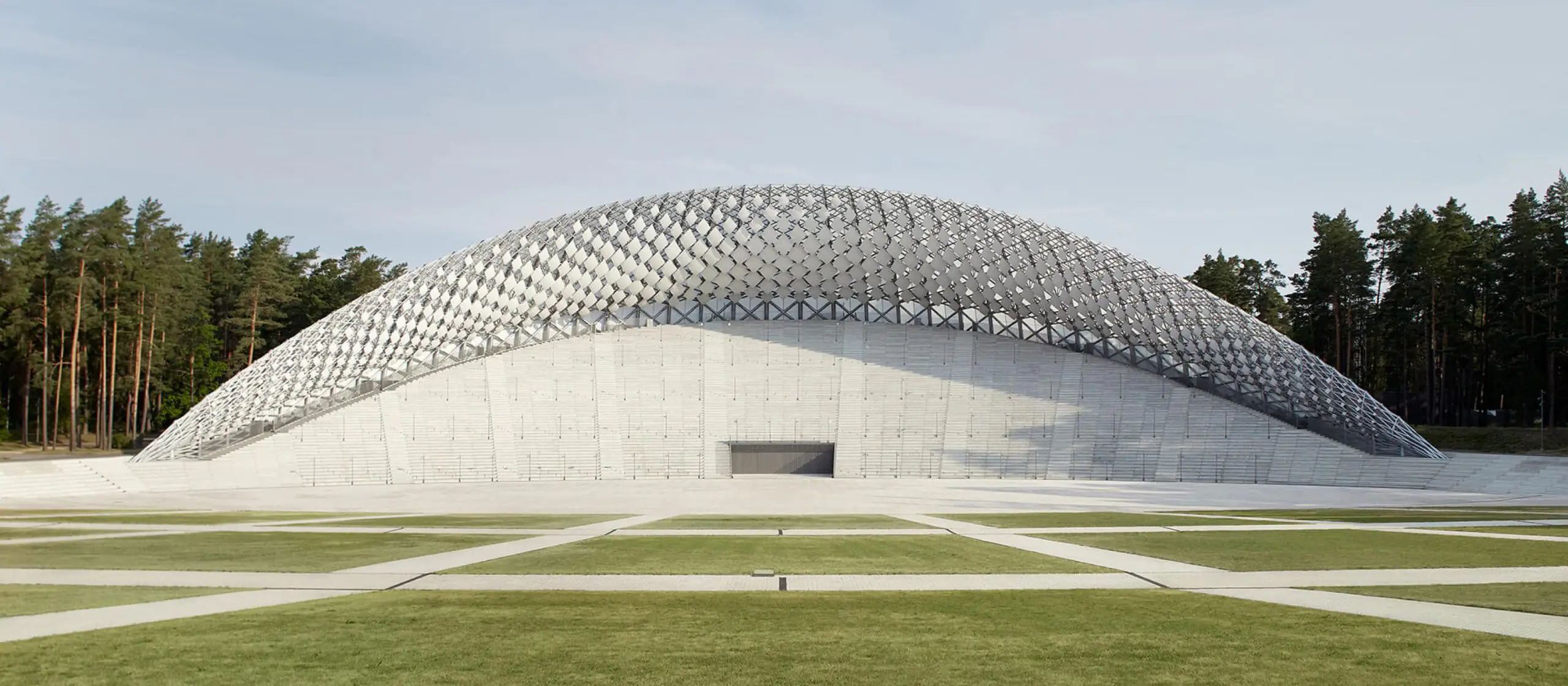
stirworld.com
Judging by the proposed new projects, several Latvian stages will be reconstructed in the near future—for example, the Stropu open-air stage in Daugavpils (Stropu estrāde) and the stage in Rēzekne (Rēzeknes estrāde) are awaiting reconstruction. If you want to see them in their present form, look for the nearest one on the map and go on a trip: you should hurry up!


